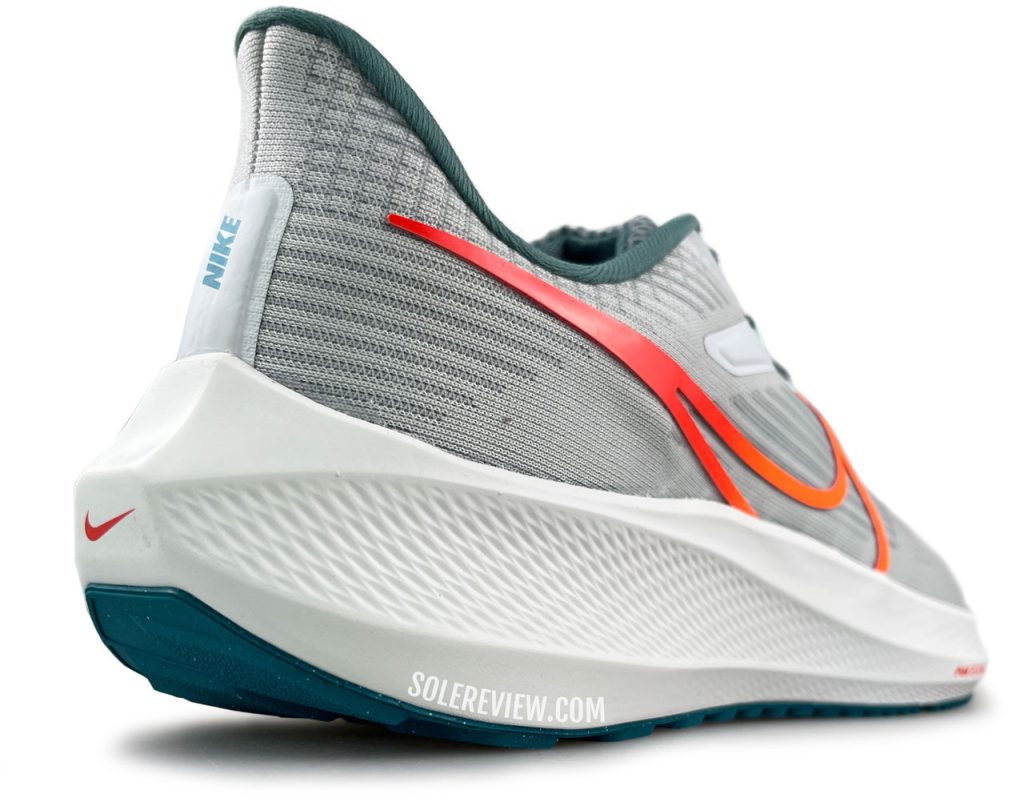
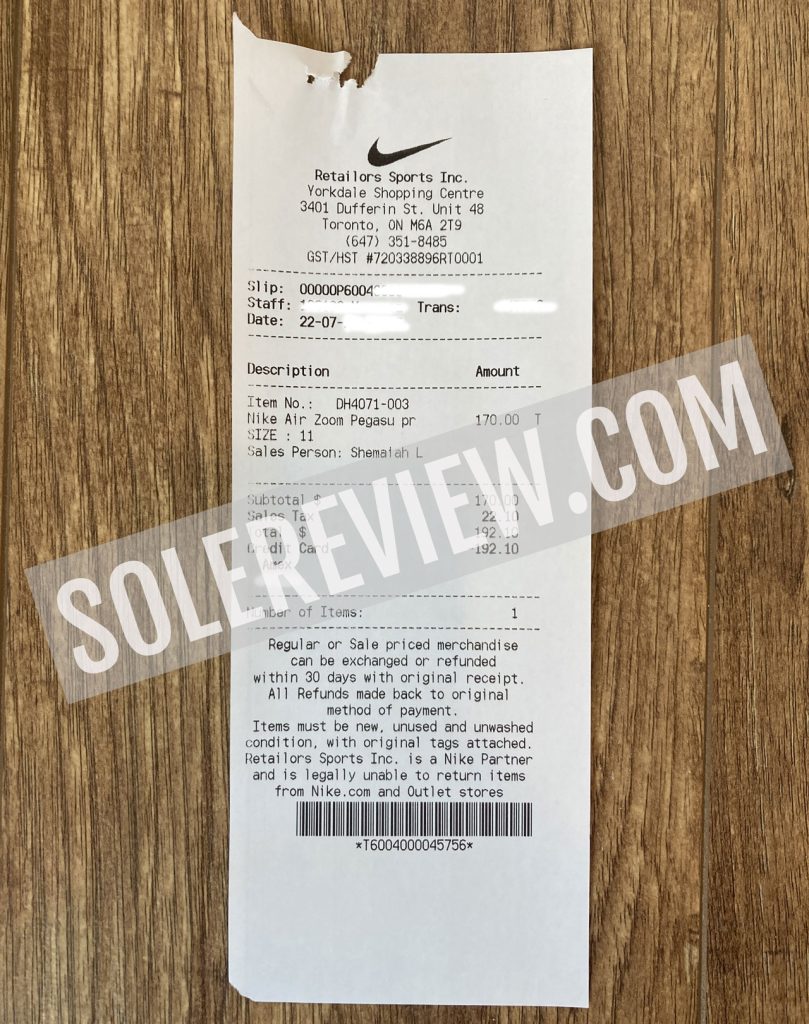
The Nike Air Zoom Pegasus 39 was purchased at full retail price for our review. The amount is in Canadian Dollars.
In this review:
INTRODUCTION
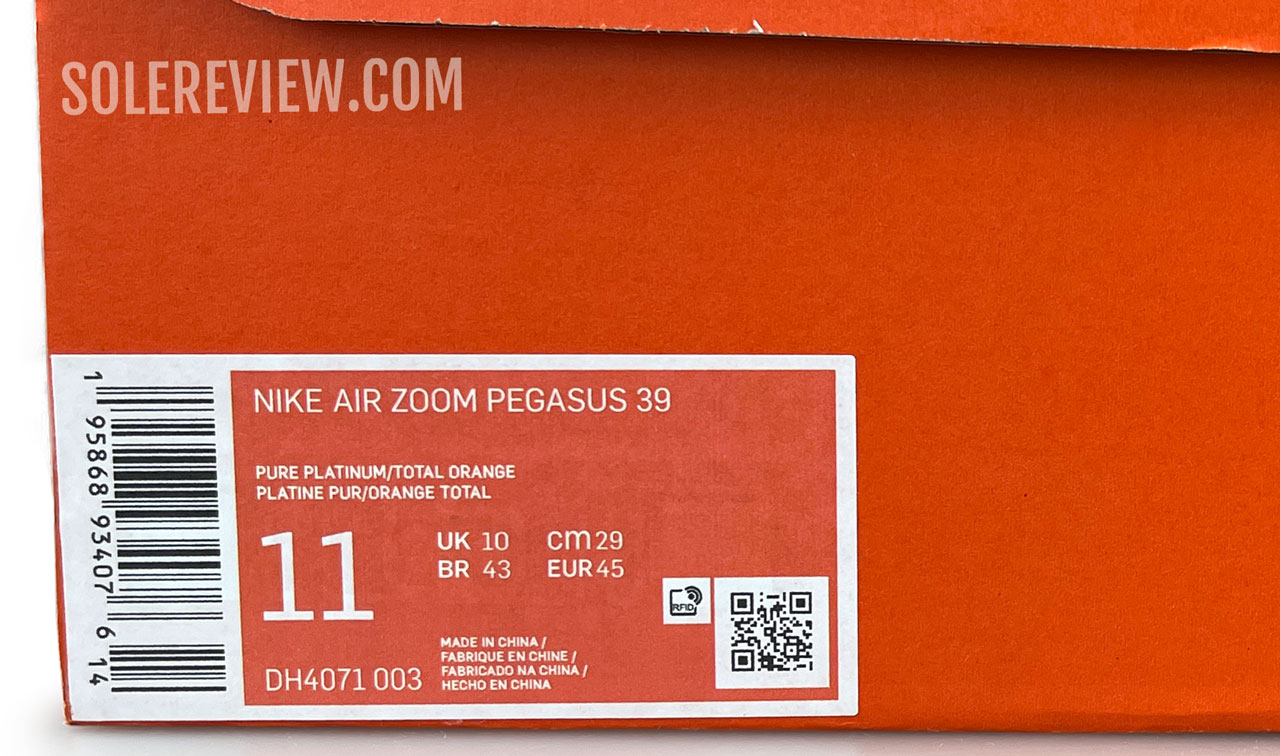
The Nike Pegasus 39 is excellent, but it took a while to get to this point.
Unlike consumer products like smartphones, cameras, and cars, the running shoe design doesn’t progress linearly.
For example, the improvements on a new phone or camera can be easily measured by comparing it with the previous model. Is the processor quicker? Has the battery life improved? Is the device lighter or stronger? Things of that nature.
On the other hand, the design of an incoming running shoe model is like a roll of a dice. A lot has to do with the development lead time that does not allow the market feedback from the current model to be incorporated into the next shoe. We know, that makes no sense at all, but it’s true.
Time permitting, we’ll write a detailed article on why that is, and why brands should ditch the annual update tradition for most of their shoes.
The absence of a structured data collection process means that the design of a running shoe is based on anecdotal feedback and subjectivity.
While this isn’t to say that improvements don’t happen – the new cushioning foams are a great example – but a lot of what you wear on your foot is the result of a primitive design process.
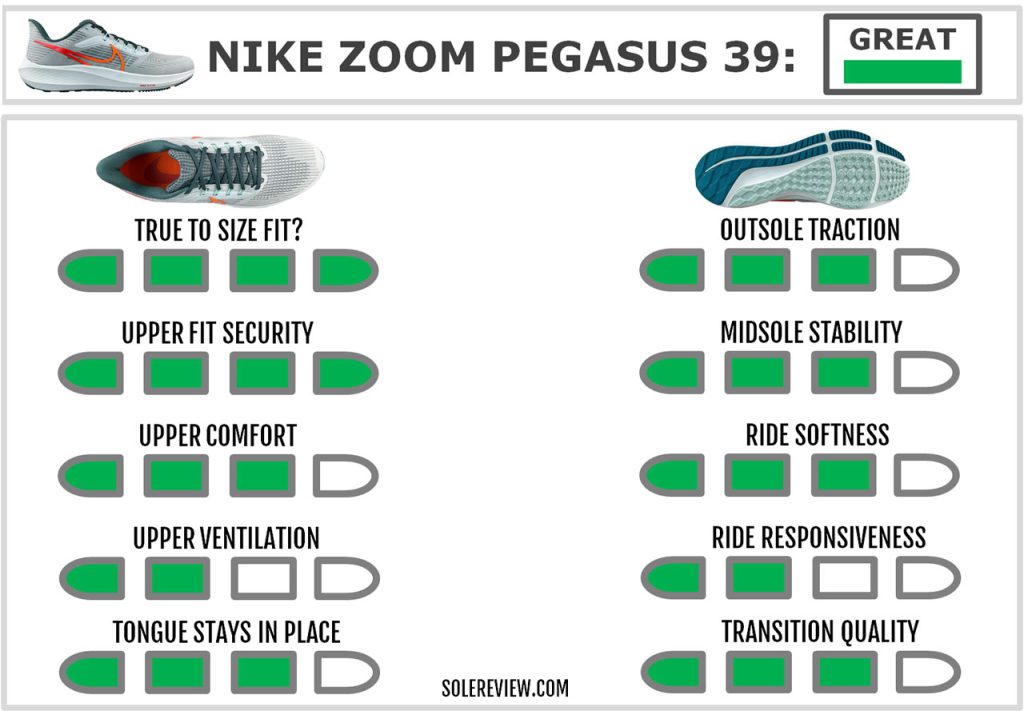
The Nike Pegasus 39 is an excellent running shoe, and one of the best in the series. But Nike’s return to form took nearly four years, because the last time the Pegasus was this good was the version 34. The Pegasus 35 and 36 were also nice, but their firm ride lacked the mass appeal of the 34.
And what’s funny is that the Pegasus 39 is very similar to the Pegasus 34. It’s like the Pegasus 34 reincarnated, but with contemporary materials and construction.
Which is a pity, because we had to endure the mediocre Pegasus 37 and 38. The last two versions weren’t bad running shoes, but they lacked the neutral and balanced do-everything character that the Pegasus was supposed to have.
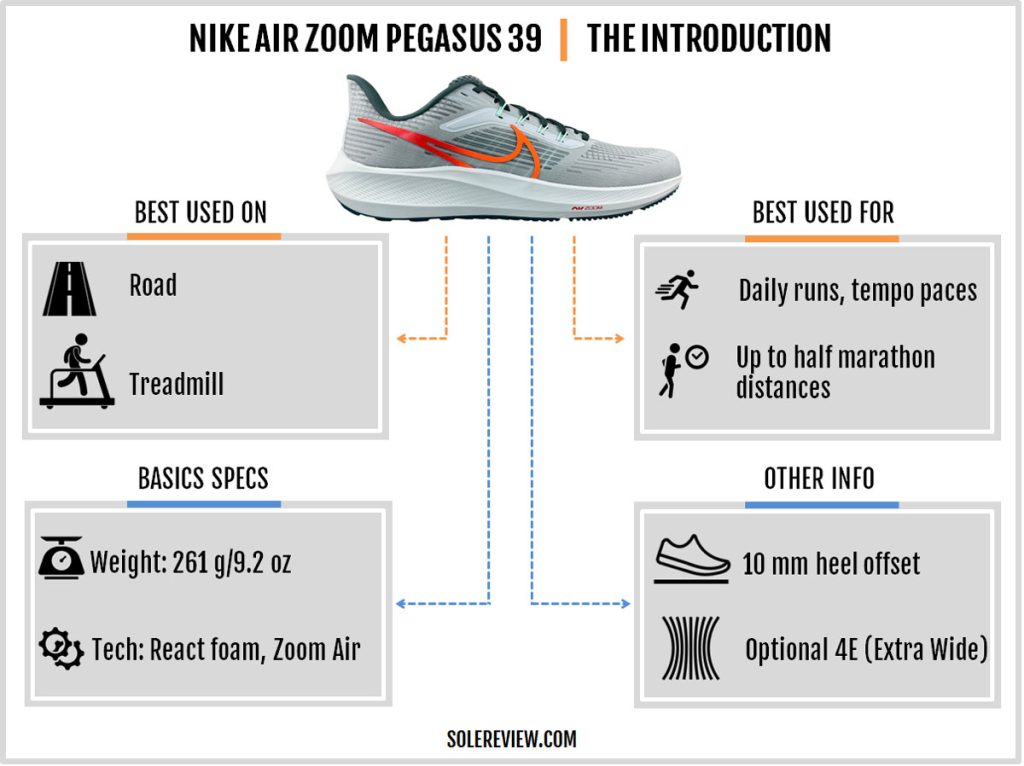
The Pegasus 39 is a thoughtfully-designed running shoe that is a far cry from the shoddily put-together React Infinity Run 3.
The dual Zoom Air bags inside the React midsole deliver a cushioning quality that feels just right. It’s good for everyday runs, tempo workouts, long-distance runs, treadmill sessions, and full-contact landing.
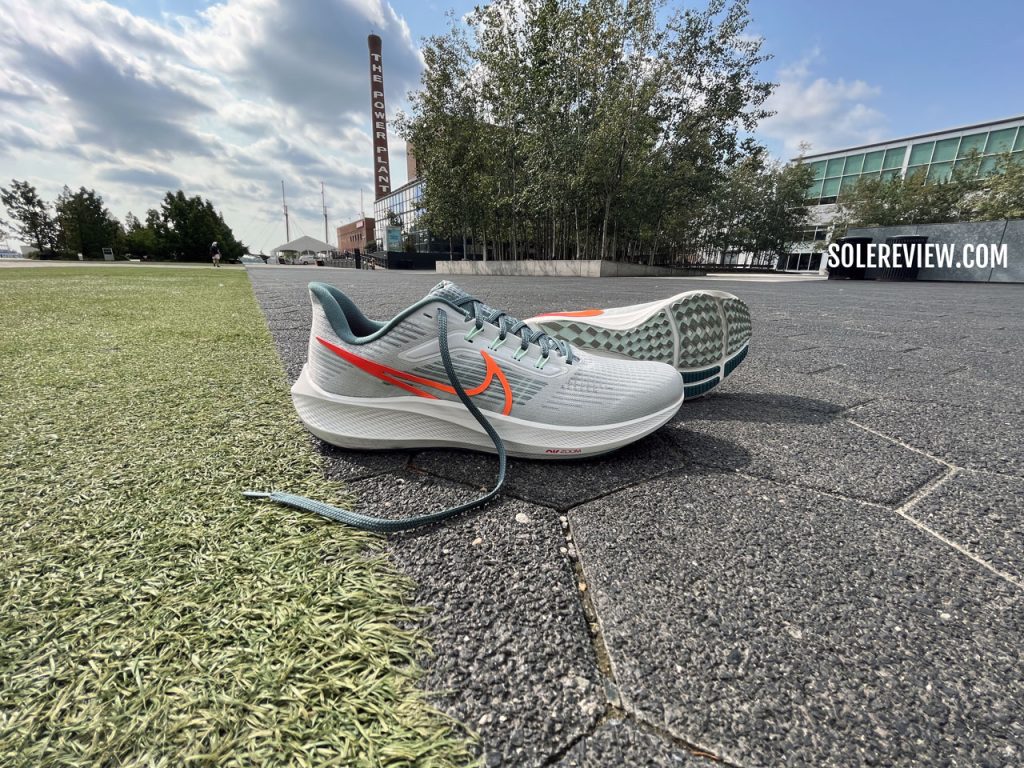
These qualities make the Pegasus 39 very close to being the one running shoe to do it all.
Even the sleeved upper is excellent. The fit is secure, and clever touches like the spacer mesh lining and lacing loops make the interiors comfortable and secure.
So is the Pegasus 39 worth upgrading from the 38? That’s a resounding yes.
THE NIKE PEGASUS 39 COMPARED TO PEGASUS 38
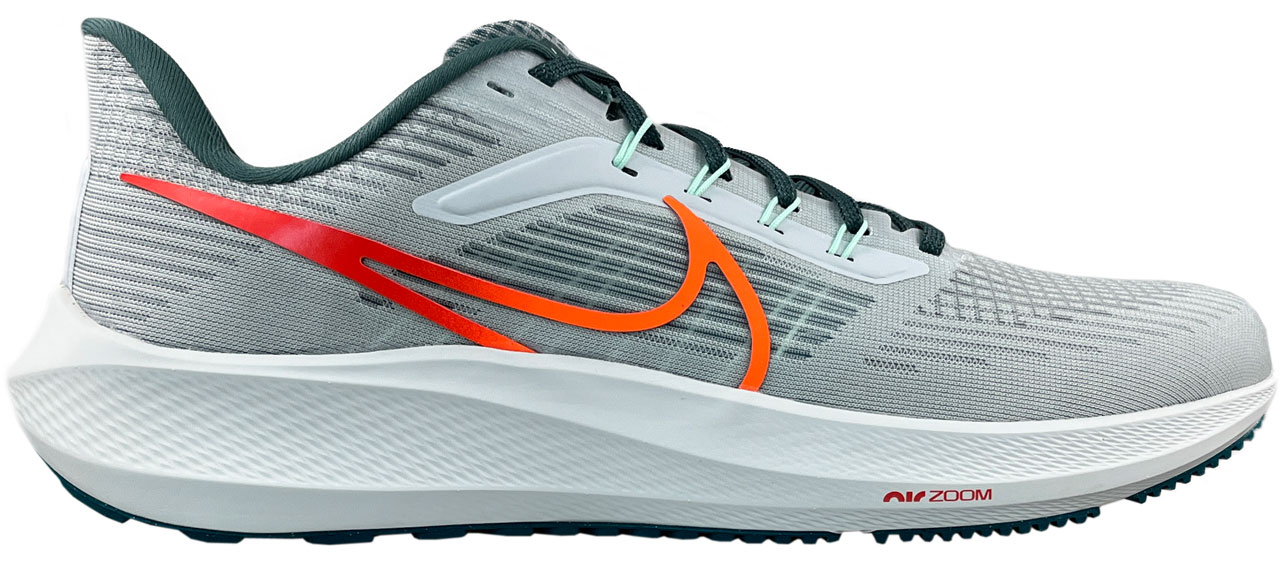
If you own a pair of the Pegasus 37 or 38, a lateral upgrade to the much-improved 39 will make you happy.
When compared with the Pegasus 38, the 39 is an improvement on every level.
The midsole now has two Zoom Air bags over the Pegasus 38’s forefoot-only configuration, so there’s a better sense of cushioning balance. The React foam density is also softer than the 37 and 38, and that produces a higher level of ride comfort.
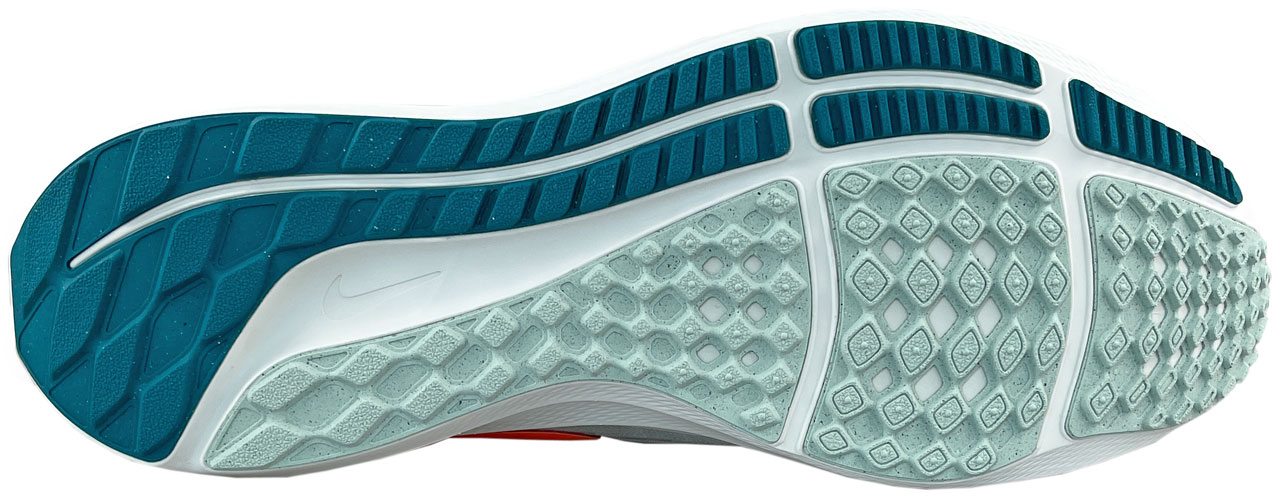
Several performance-related updates lie hidden within a familiar outsole geometry.
While visually similar, the new outsole grips better due to the fin-like lugs on the outer side. The rearfoot transitions have also improved, as the Pegasus 39’s outsole makes the transition groove shallower and increases the rubber coverage under the heel.
One of the things we didn’t like about the Pegasus 38’s upper was its tendency to bunch up near the first lacing row. The Pegasus 39 takes care of that with a reinforced mesh area under the first row – something that was missing on the 38.
We also like the 39’s Flywire cords better, especially with the protective ‘cover’ that we haven’t seen before – more on that in our upper fit section.
The new model is $10 more expensive than the 38.
The Nike Pegasus 40 is here, and it’s nearly identical to the Pegasus 39.
THE MIDSOLE DESIGN AND RIDE EXPERIENCE
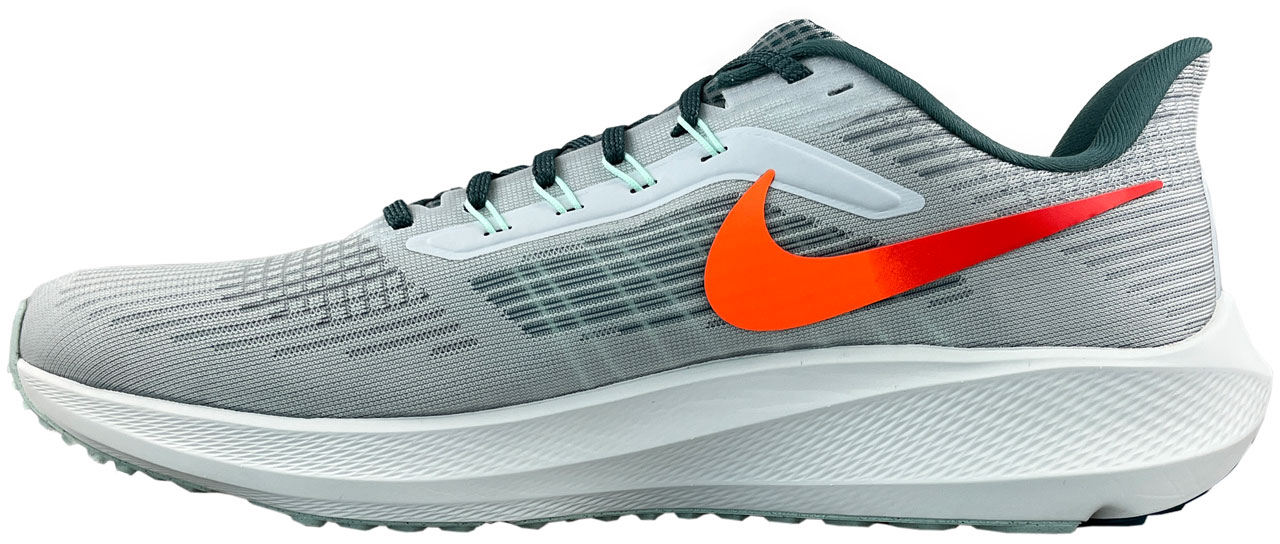
The Pegasus 39 is like a Pegasus 34, but with modern touches.
It’s remarkable how similar the Pegasus 39 is to the 34. Two Zoom Air bags – one each under the forefoot and heel – are embedded inside the React foam midsole.
The midsole also has a firm cellulose board over the heel, a feature that made its debut on the 2014 Pegasus 31.
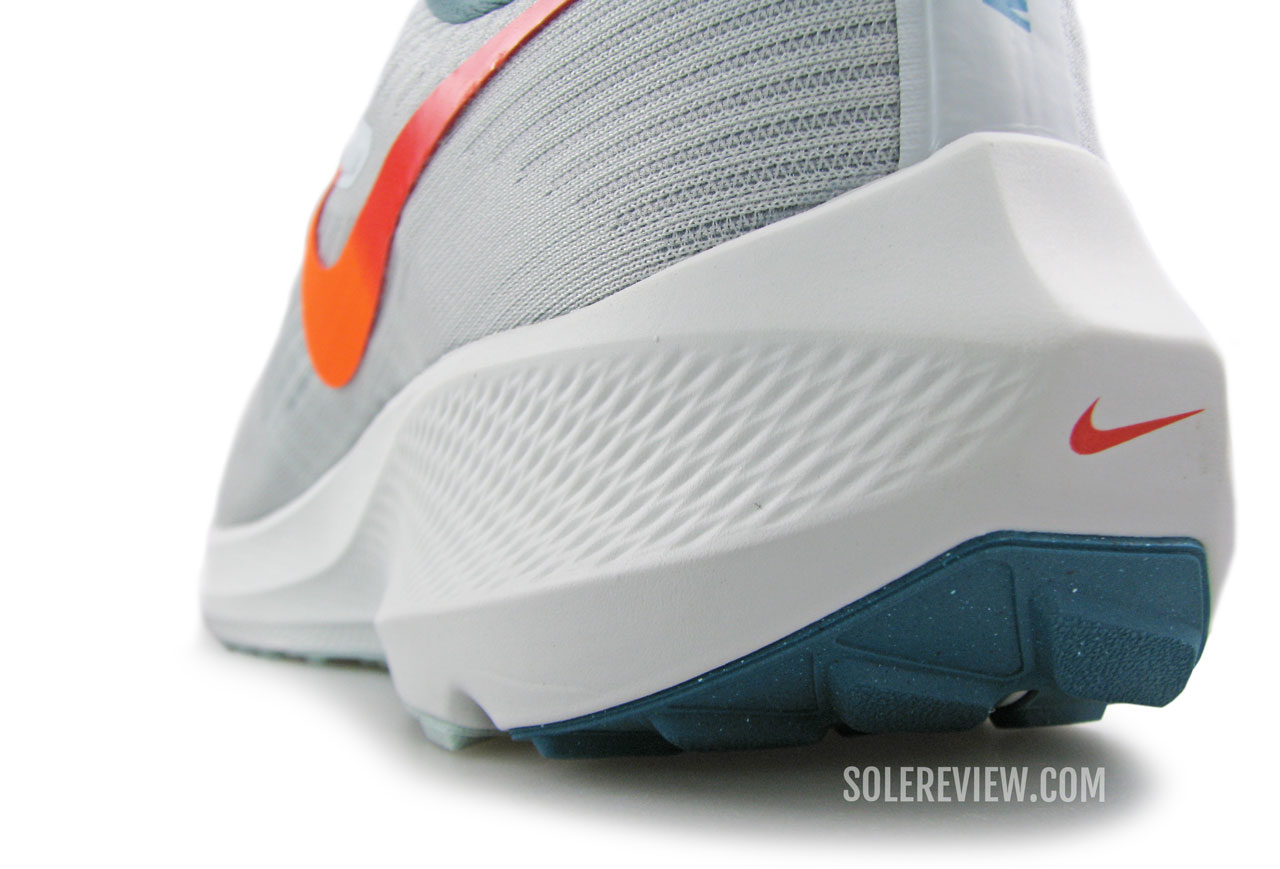
The React foam midsole is softer than the 38, and delivers a higher level of neutral ride comfort.
Despite the surface-level similarities, the Pegasus 39 isn’t the same as the 34; it’s a refined version with notable improvements. Along with a higher level of softness, the balanced sidewall design adds a stronger neutral character.
Unlike many of the previous Pegasus models with a compression scoop on the outer midsole, there’s no cushioning bias here – both sides of the midsole are equally cushioned and supportive.
The Pegasus 39 is easily the most ‘neutral’ version we’ve run in so far.
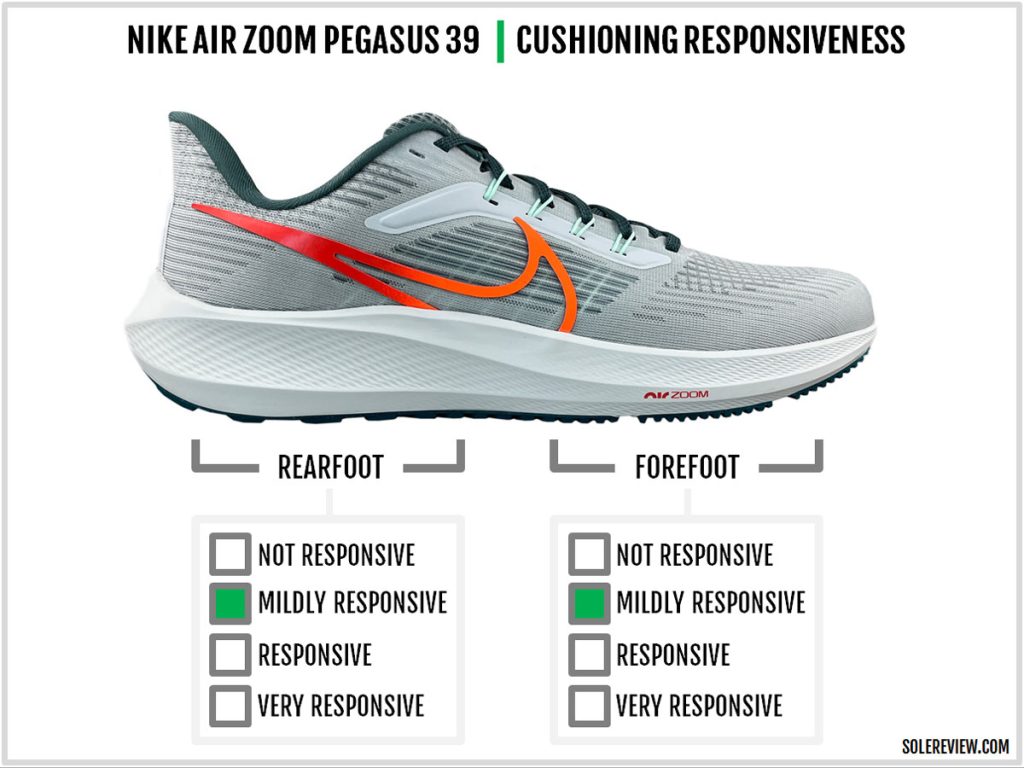
If this shoe were reviewed 8 years ago, we would have labelled the Zoom Air bags as ‘responsive’. After all, PEBA-based foams only began appearing in 2017, so cushioning inserts like Zoom Air were as responsive as one could get.
But things are different now, so our benchmarks for bouncy ‘responsiveness’ have evolved.
At best, the Zoom Air bags act as transition-friendly features that make the ride supportive and efficient. Sure, there’s a subdued sensation of bounce-back, but it’s not very pronounced.
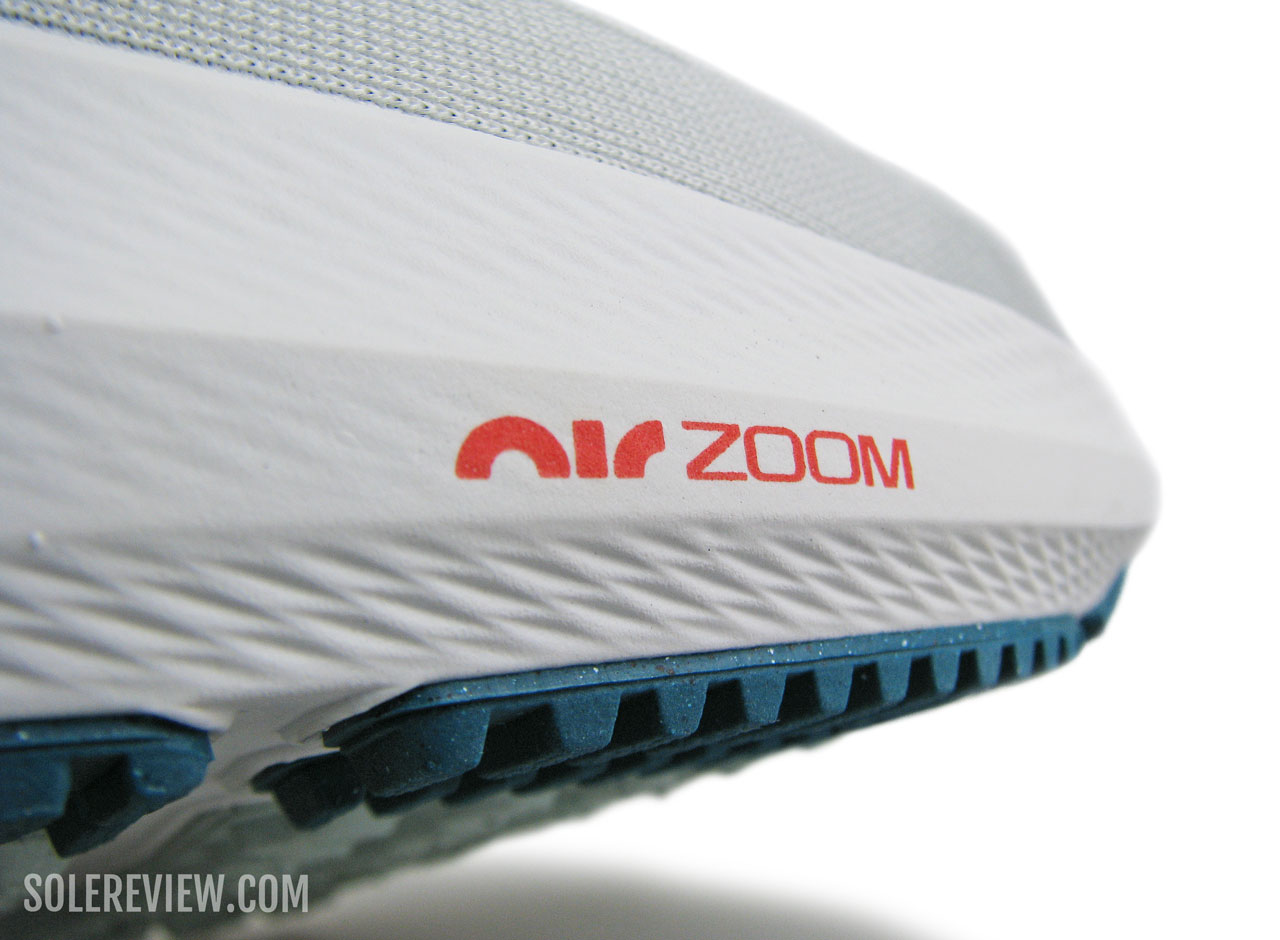
There’s a lively Zoom Air bag under the heel and forefoot for a balanced cushioning feel.
By being firmer than the surrounding foam, the compressed Zoom Air bag acts as a supportive base.
While not ‘springy’ per se, Zoom Air adds a lively snap under the heel and forefoot. The forefoot bag also does not feel lumpy as it used to, so at some point, we need to take the shoe apart to see if anything has changed.
The heel Zoom Air bag is topped with a cardboard layer, so you can’t feel the contours of the bag – and in a good way.
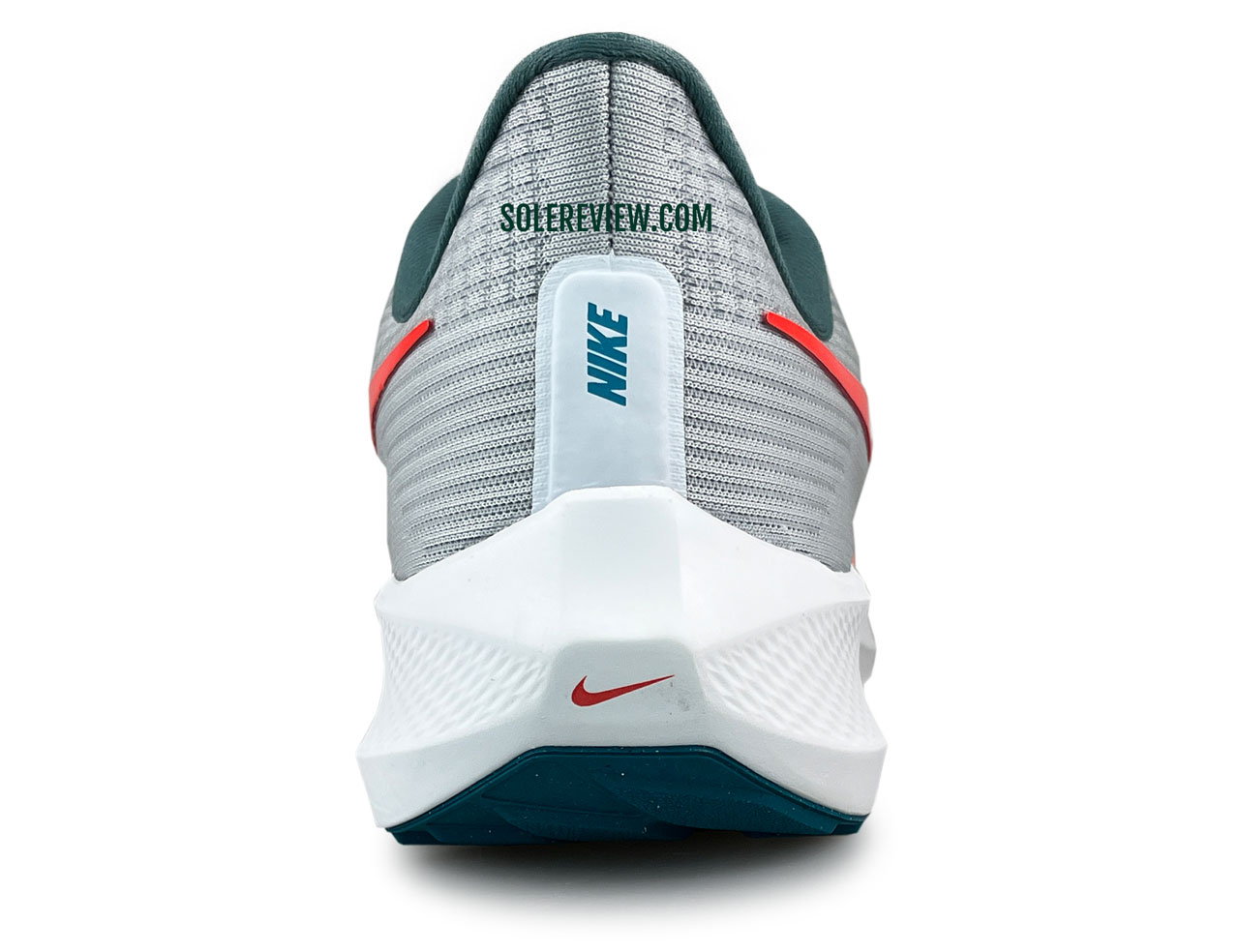
The balanced midsole design is very neutral in its cushioning delivery. The cellulose board above the midsole also makes the ride stable.
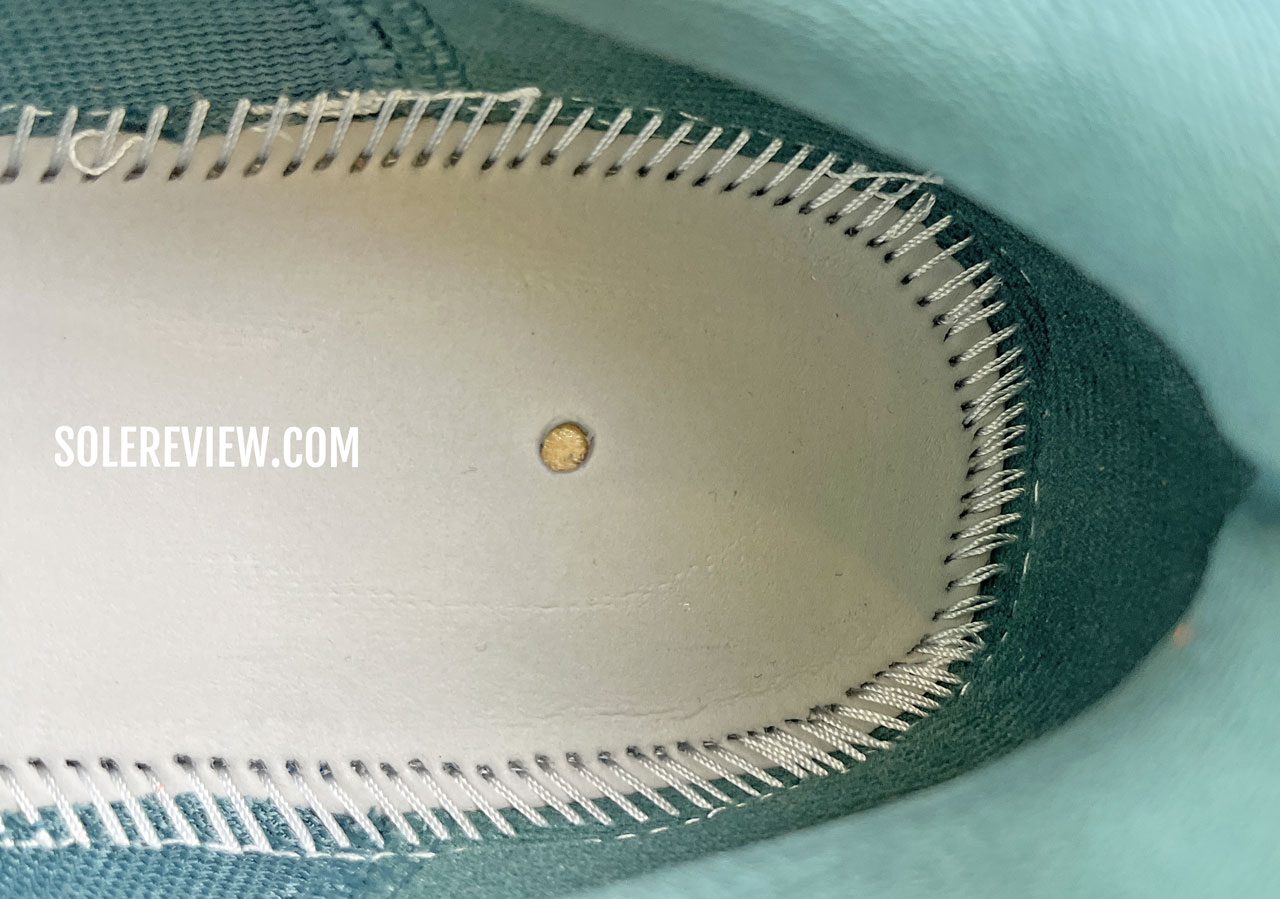
The hard cellulose board (cardboard) can be seen through the lasting alignment hole.
Even though the rear midsole base isn’t very wide, the Pegasus 39 scores well on stability.
There’s a firmer cellulose (cardboard) piece over the heel Zoom Air bag that prevents the foot from sinking deep. The firm board also helps the Zoom Air compress more evenly to optimize the cushioning delivery.
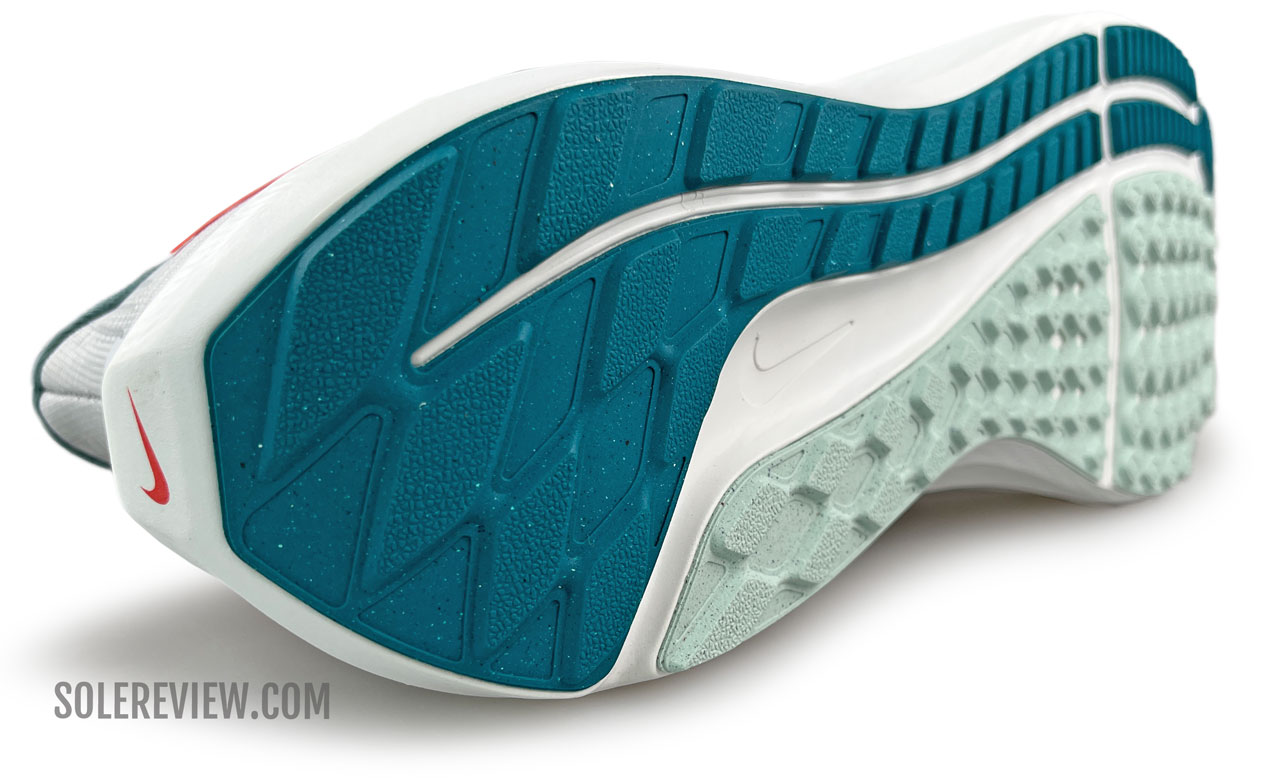
There’s plenty of outsole rubber coverage and grip for rearfoot strikers to land on. Note that the heel has a lot more rubber than the Pegasus 38, and the transition groove is shallower, narrower, and shorter.
Though the outsole layout looks similar, there are a few changes. The first is the larger outsole coverage under the heel. The crash pad groove is situated under the forward rearfoot instead of being close to the heel edge.
The second change is the much narrower and shorter transition groove that no longer affects the cushioning softness – at least not to the extent that it did on the Pegasus 37 and 38.
It’s now a feature to just make the transitions smoother – akin to Nike’s version of Asics ‘Guidance Line’, if you will.
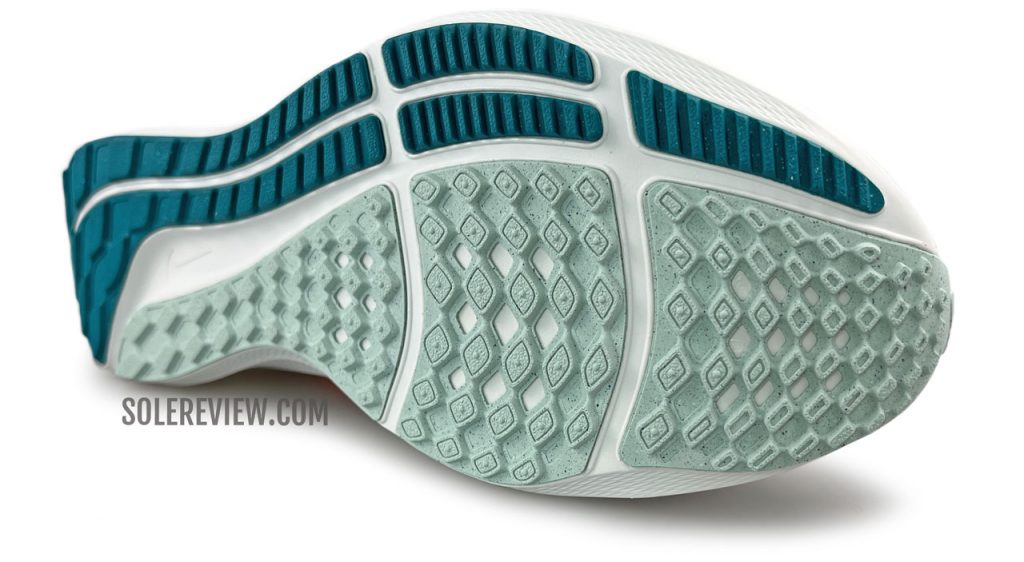
The full coverage outsole of the Pegasus 39 has excellent grip for most road conditions.
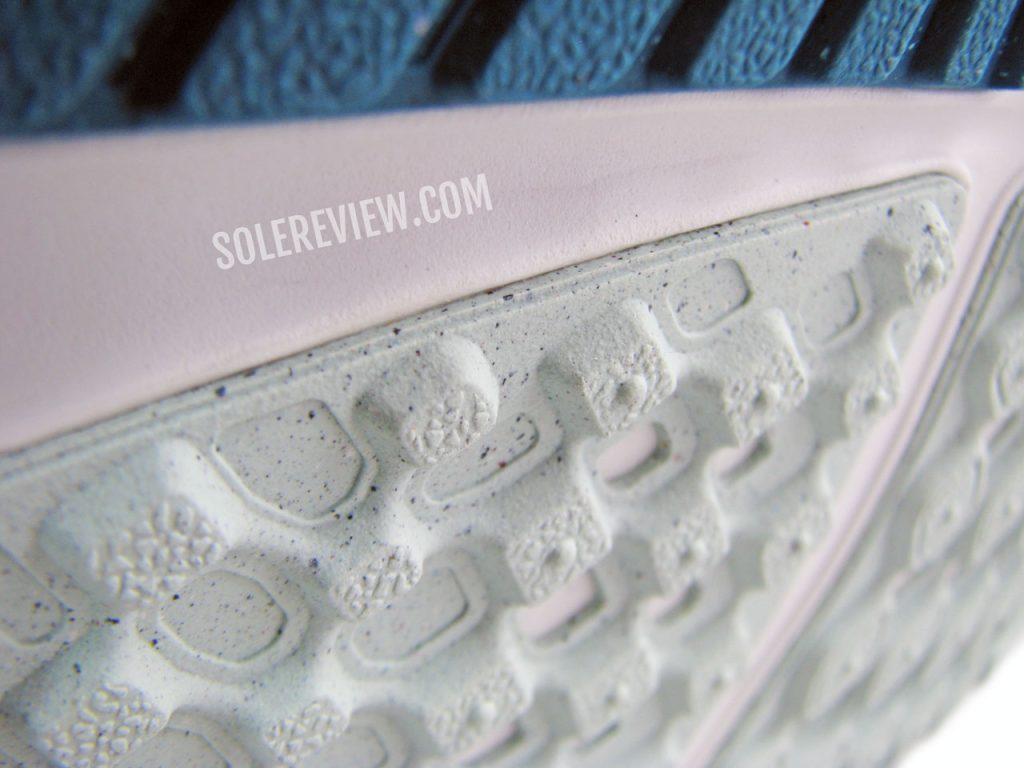
As far as traction is concerned, a colony of smaller lugs does a better job than larger waffles.
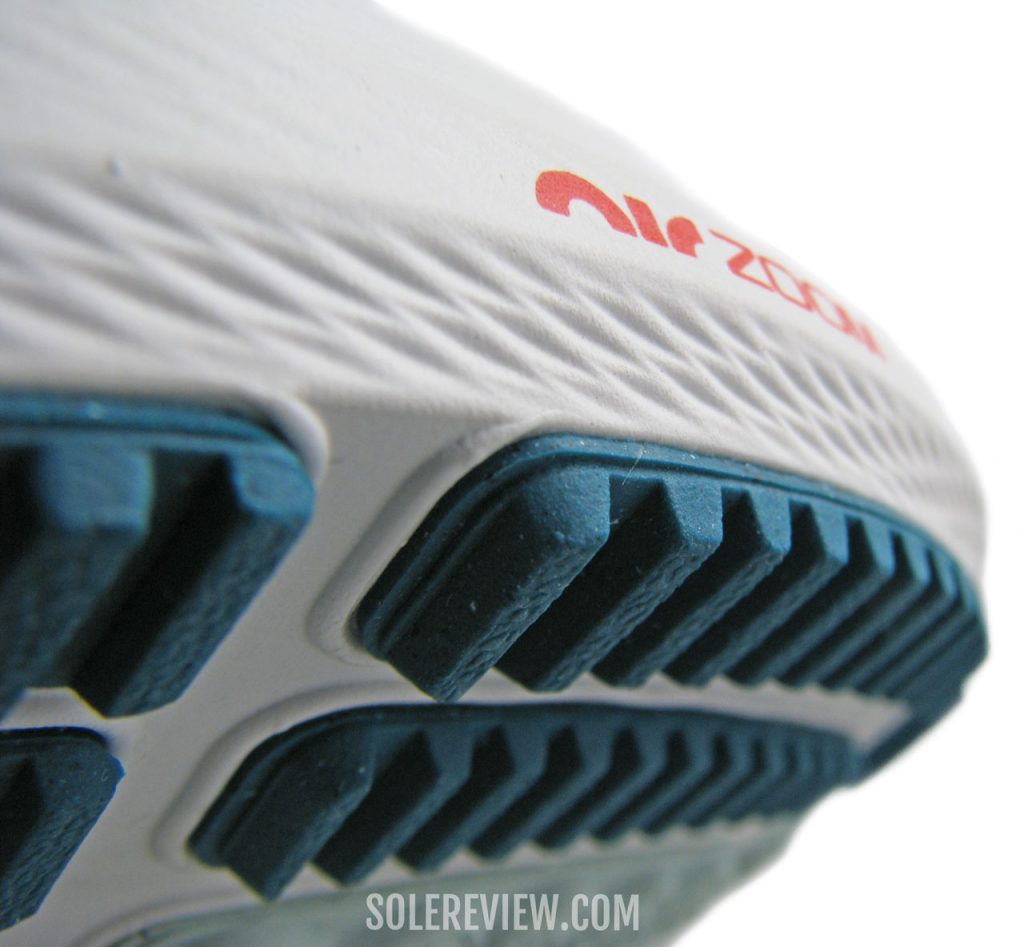
The tiny rubber lugs on the sides have a satisfying road bite.
There’s a minor improvement in the traction quality due to the new micro lugs on the outer side. On the Pegasus 37 and 38, this area used to be flat. As a result, the Pegasus 39 does a better job of gripping the road.
By the way, this isn’t a new feature. Nearly a decade ago, the ‘crash rails’ of the Pegasus 30 had a similar lug design.
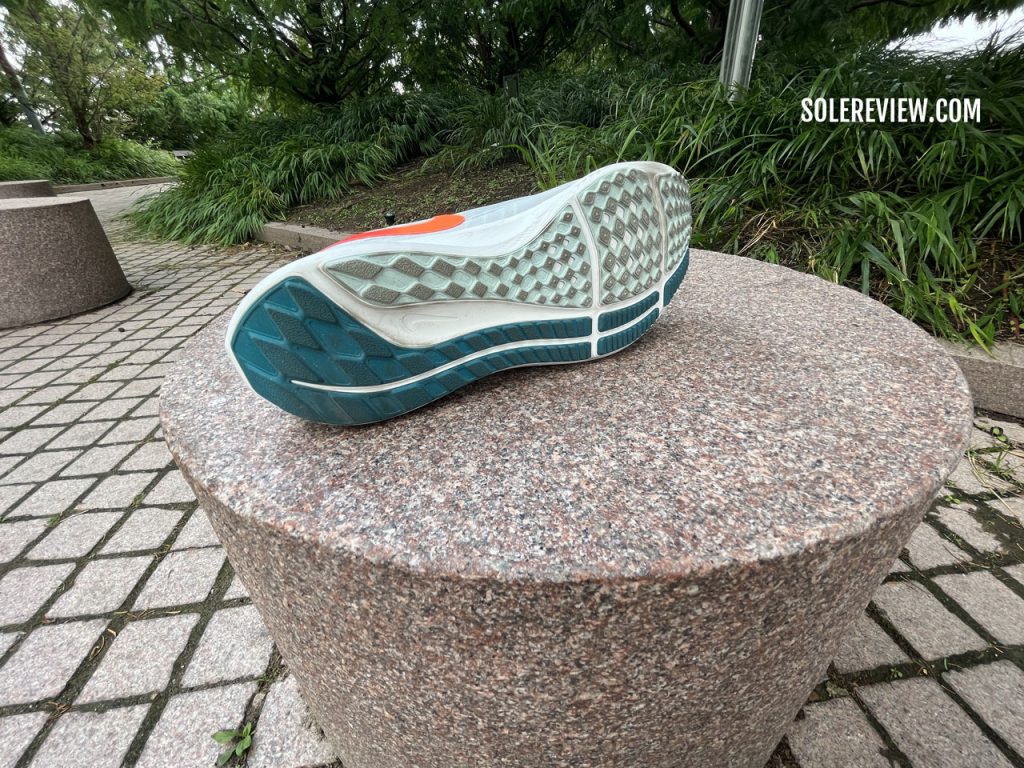
The various features work together in perfect harmony on the Pegasus 39, and that’s what makes it such a versatile running shoe. Despite its 10 mm heel offset, the Pegasus works equally well for forefoot and rearfoot strikers.
The beveled heel doesn’t get in the way of forefoot strikers, and the cushioned heel makes rearfoot landings comfortable and supported. The transition groove and grippy outsole do the rest.
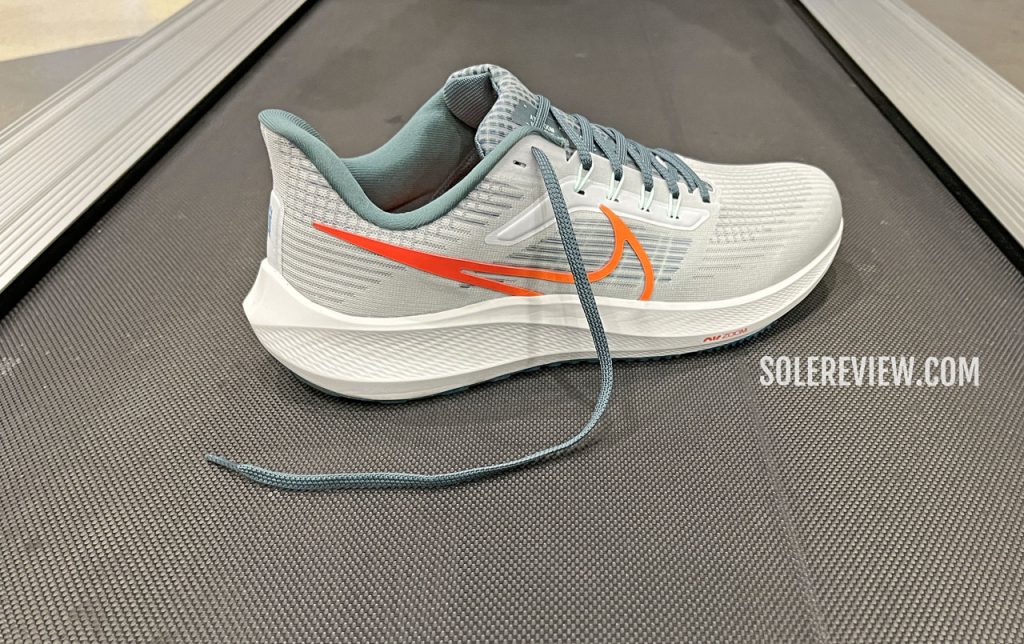
The Pegasus 39’s just-right cushioning makes it an excellent treadmill running shoe.
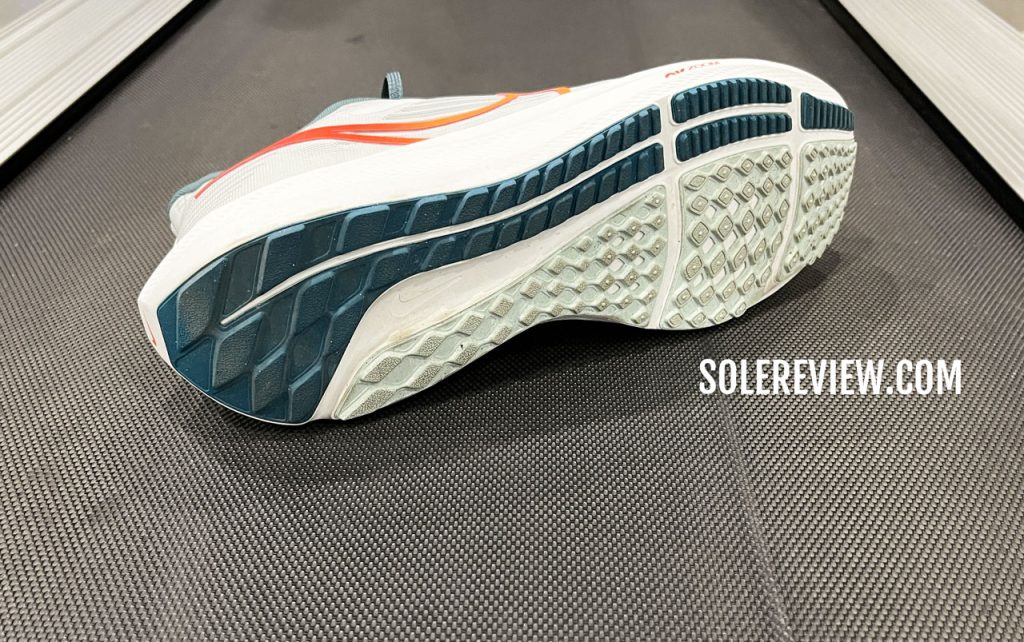
The rubber lugs provide confidence-inspiring traction over rubber belts.
That means that the Pegasus is very close to being the ideal do-it-all neutral trainer. It doesn’t feel sluggish at paces of 4:00 – 4:30 km/hr (6:30 – 7:00 min/mile), so it can also be a tempo trainer when needed. The Pegasus 39 is also a suitable shoe for treadmill runs.
For speeds faster than 4:00 min/km (6:30 min/mile), we recommend getting a proper speed shoe.
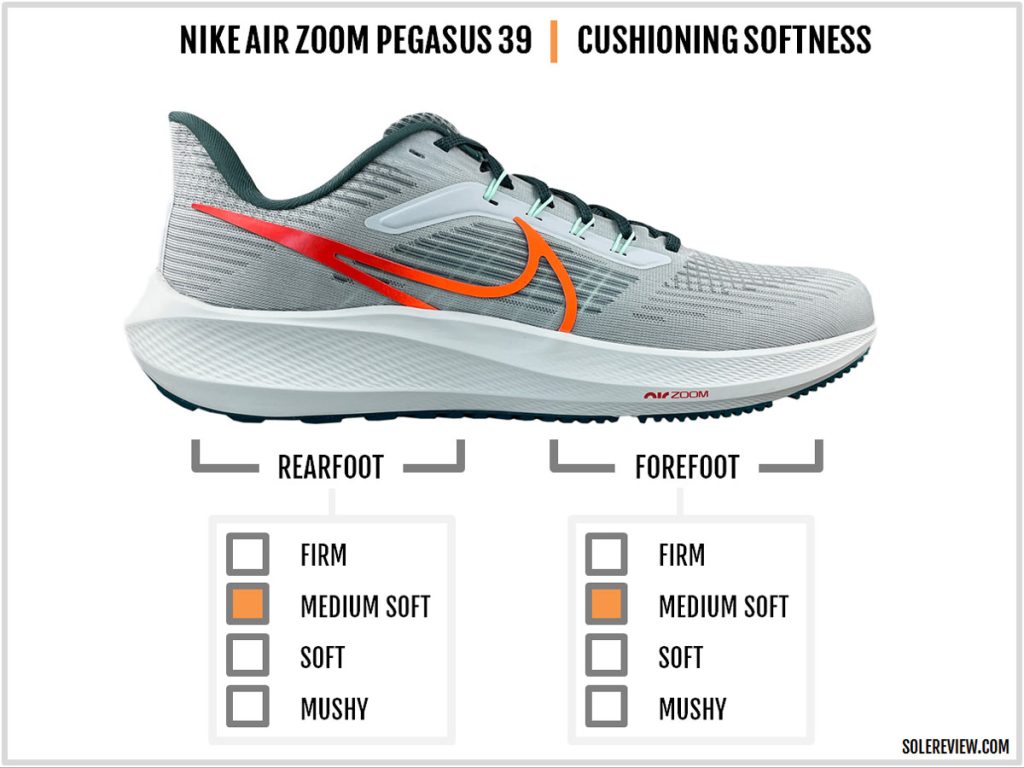
All this talk about the firmness and transition efficiency may lead you to believe that the Pegasus is a firm shoe. We assure you that it is not – the Pegasus 39 is the softest version in the Pegasus series 3X. That is, of course, relatively speaking – the Pegasus was never a super squishy running shoe.
The 2013 Pegasus 30 was the last model with a soft ride before being replaced with the firmer Pegasus 31.
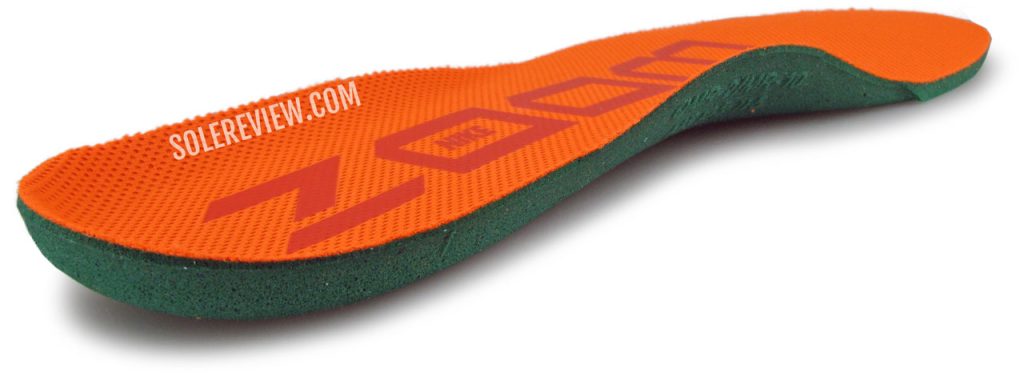
The soft footbed adds a layer of step-in comfort.
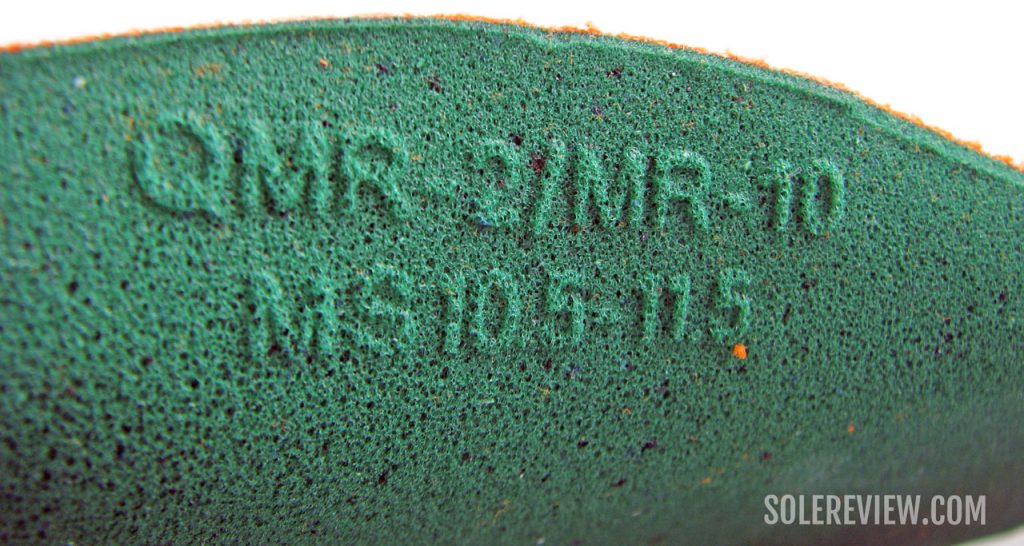
The footbed uses a blown foam base that resembles Ortholite.
Unlike some Nike models like the React Infinity Run V3, the Pegasus 39 has a fairly thick insole made of soft foam. The lasting under the insole is also foam, so these layers work together with the React midsole to produce a high level of ride comfort.
There’s ample cushioning for long-distance runs. The Pegasus 39 is a decent half-marathon shoe if you don’t want to pay the Vaporfly Next% or Saucony Endorphin premium. While it’s not as engaging as a plate-equipped running shoe, the Zoom Air + React midsole never feels flat or boring.
This shoe also weighs 9.2 ounces for a half pair of US 9, so that means you’re not carrying a lot of weight. The bulk is also distributed well between the upper and midsole, so the shoe never feels bottom-heavy.
RECOMMENDED ROTATION
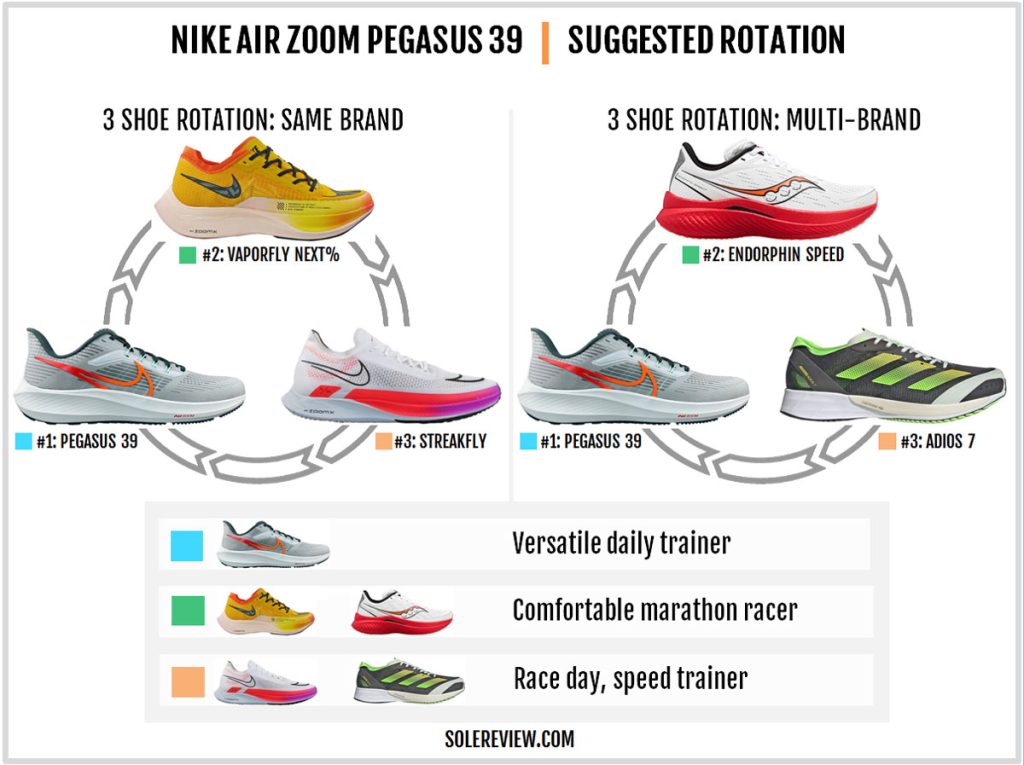
At the time of publishing this review, we don’t have miles on the Nike Zoom Fly 5, so we’ll recommend the proven Vaporfly Next% 2 as a marathon shoe pick.
The newly-released Saucony Endorphin Speed 3 is also an excellent – and less expensive – alternative. The Speed 3’s redesigned midsole is more supportive than the V1 and V2, and it has the recognizable snap from the embedded Nylon plate.
For short-distance training runs and races (of up to 10K), we recommend the adidas adios 7. It’s not as punishing as a traditional racing flat, so 10K races can be completed in relative comfort. The outsole grip is superlative, and so is the quality of midsole transitions. The adios 6 and 7 share an identical underpinning, so our review of the V6 will help you understand the ride character.
The Nike ZoomX Streakfly (our review here) gets you a softer ride for a higher level of comfort, but without the aggressive bite of the adios.
IS THE NIKE PEGASUS 39 DURABLE?
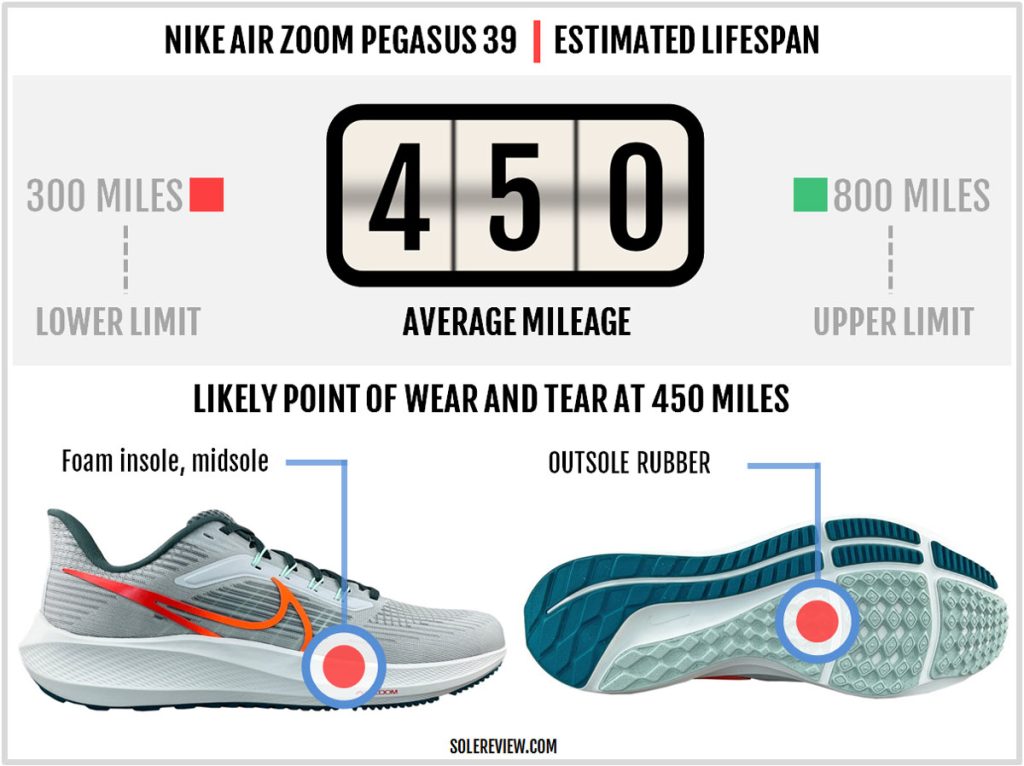
A desirable attribute of a versatile everyday trainer is durability, and the Pegasus is likely to do well in this area.
With a double-layered sleeved upper, React midsole, and full-coverage outsole, the Pegasus 39 should last 450 miles. The Zoom Air bags are usually long-lasting, as they are shielded by the surrounding foam.
THE UPPER DESIGN AND FIT
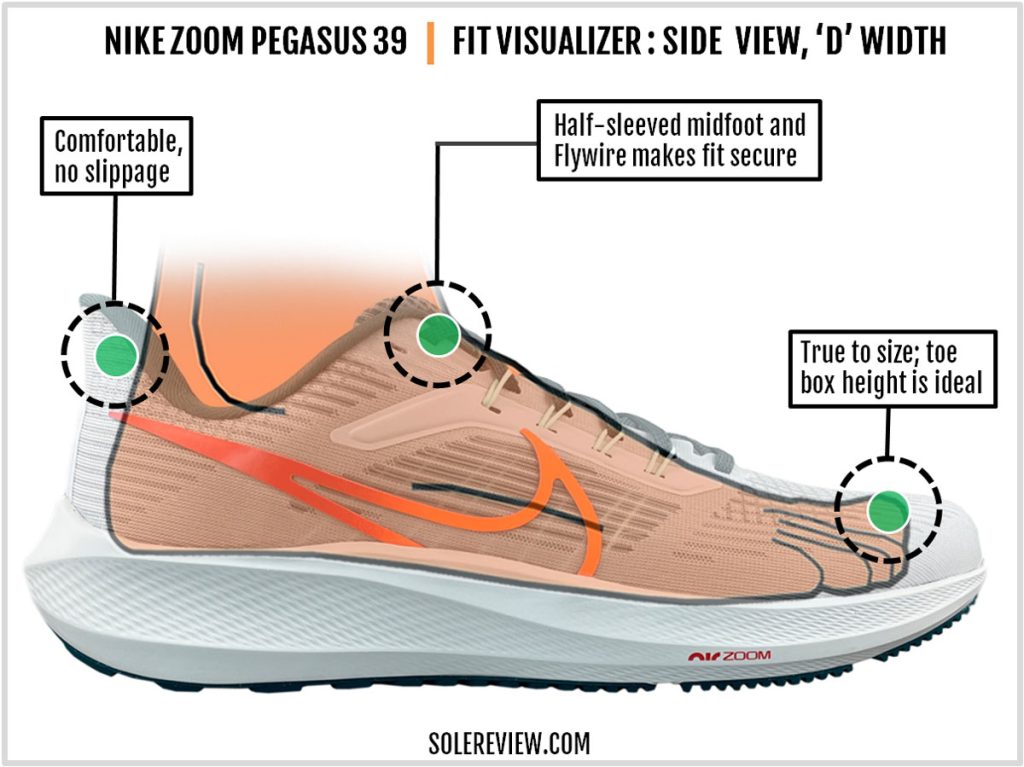
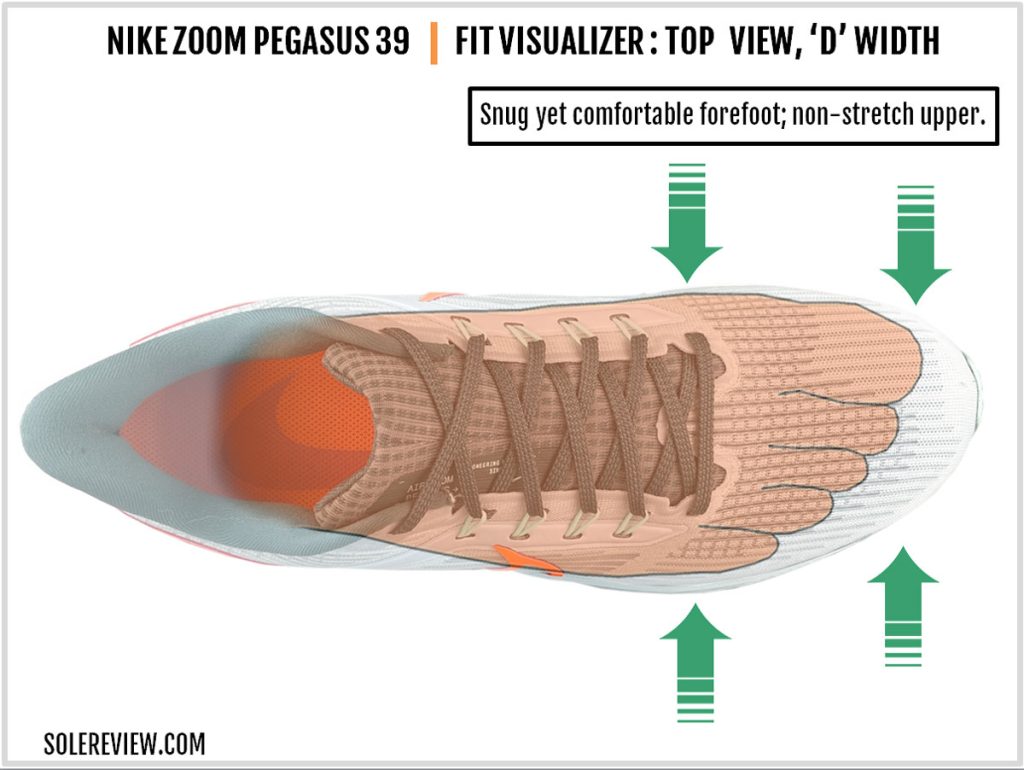
The Nike Pegasus 39 fits true to size, and has a comfortable interior with a secure fit. If needed, additional space is available in the optional 4E (Extra Wide) sizing.
And what are the factors that result in a just-right upper fit? Let’s take a closer look.
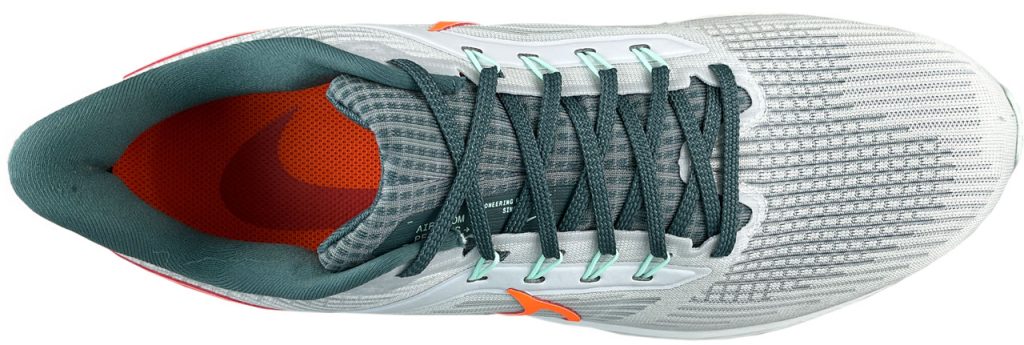
If you thought you’ve seen this upper before, it was probably on the Pegasus 34.
The dual Zoom Air bag set-up isn’t the only thing that the Pegasus 39 borrows from the Pegasus 34.
Even the upper resembles the older Pegasus – right down to the Flywire cords and double notch under the first lacing row. However, various refinements make the new upper better.
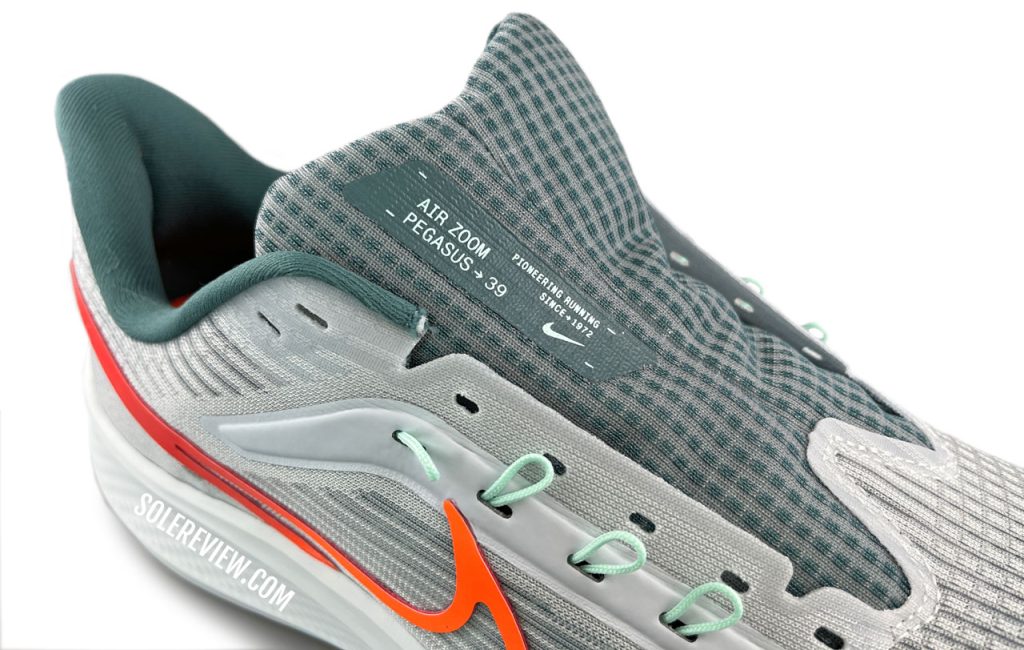
The base of the tongue has a notched overlay to prevent the upper from bunching – an issue that the Pegasus 38 had.
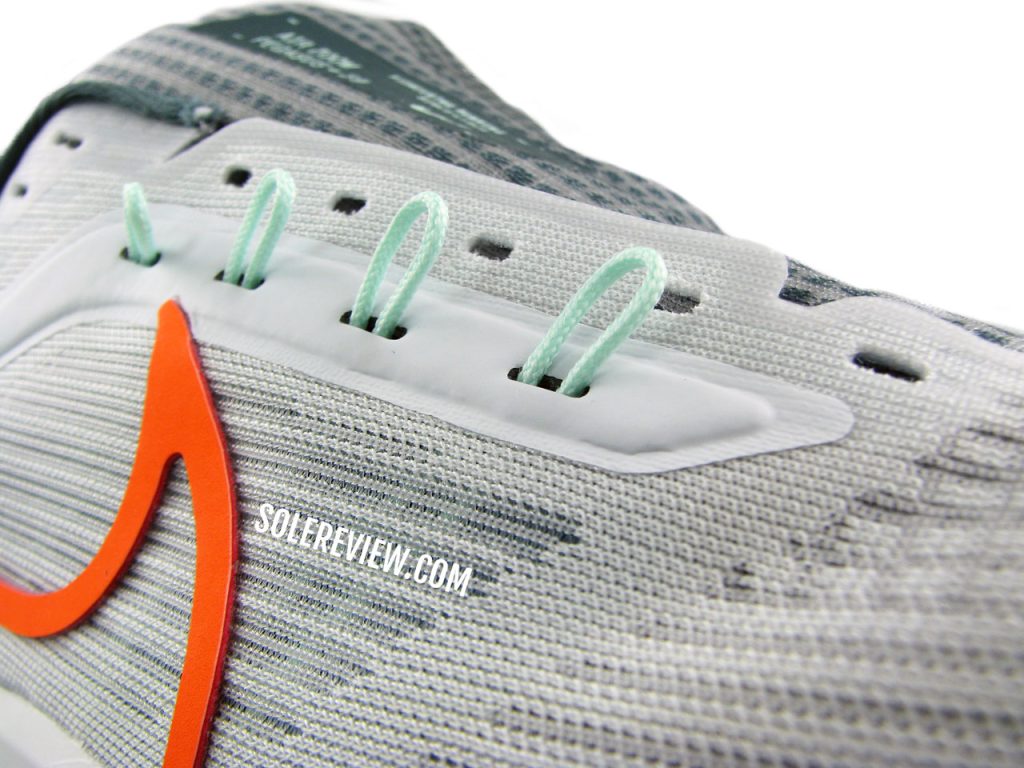
The Flywire cords connect to the laces for a secure midfoot fit.
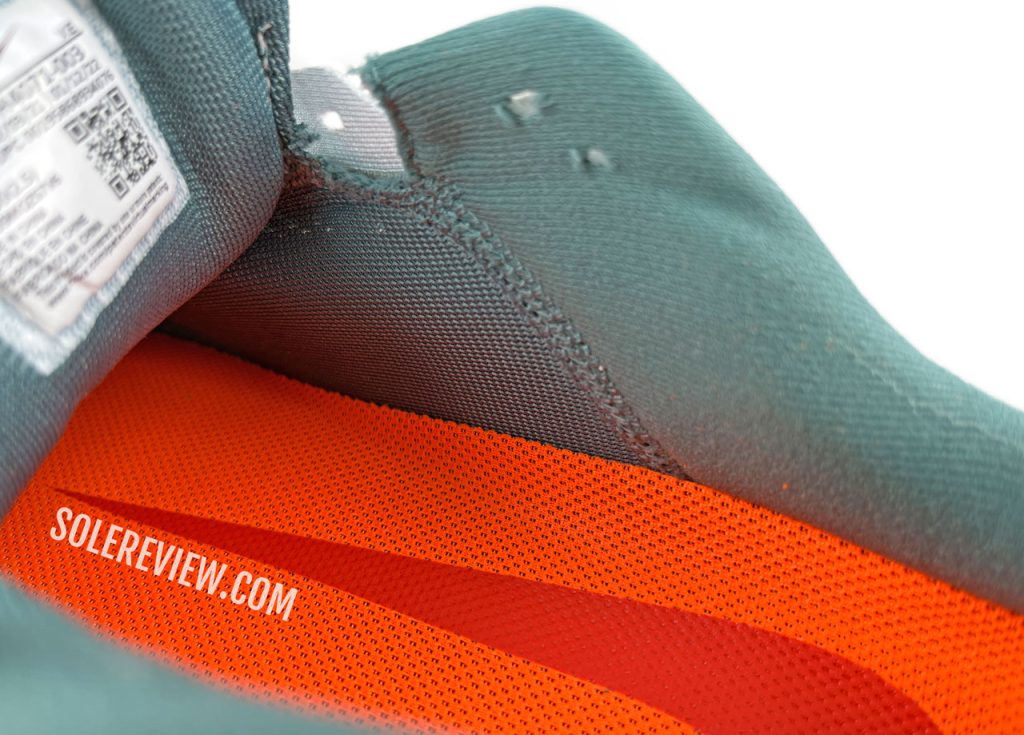
The partial sleeve extends to the toe-box, and is made of a spongy spacer mesh.
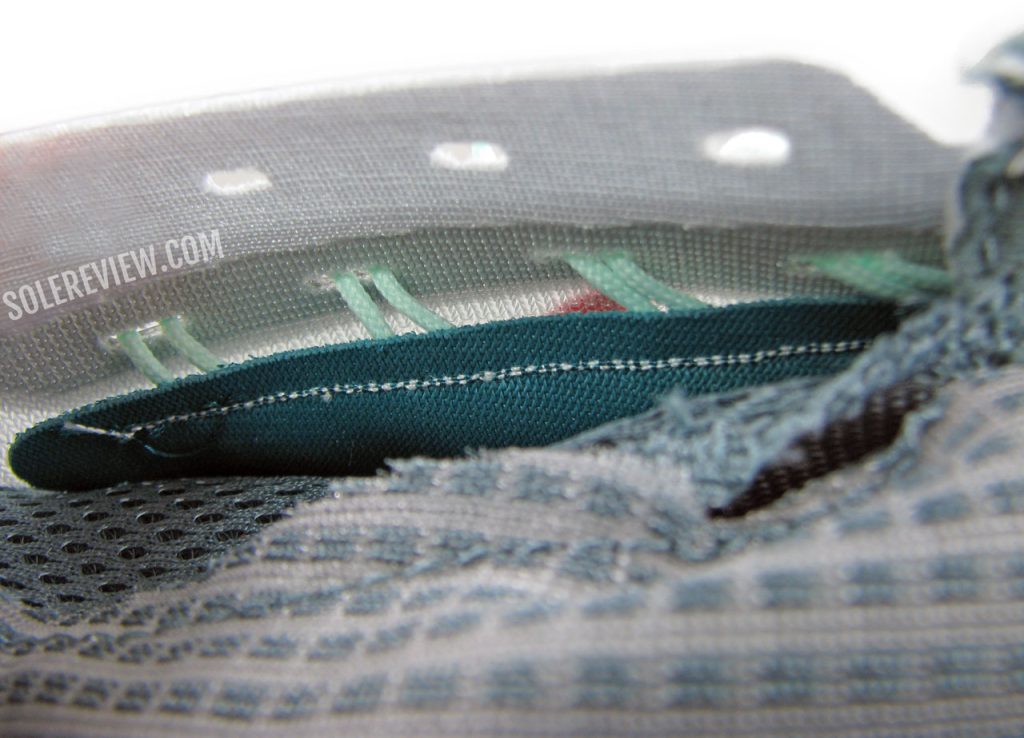
A thin mesh panel ‘shields’ the inner upper from the Flywire cords.
For example, the first lacing row doesn’t have Flywire. This reduces keeps the forefoot free of potential pressure spots. There’s another hidden feature that should be mandatory on all running shoes with a Flywire lacing system.
A thin mesh panel acts as a barrier between the thin cords and inner sleeve. This new feature filters the cinching pressure from the Flywire cords, thus making the midfoot fit smooth and comfortable.
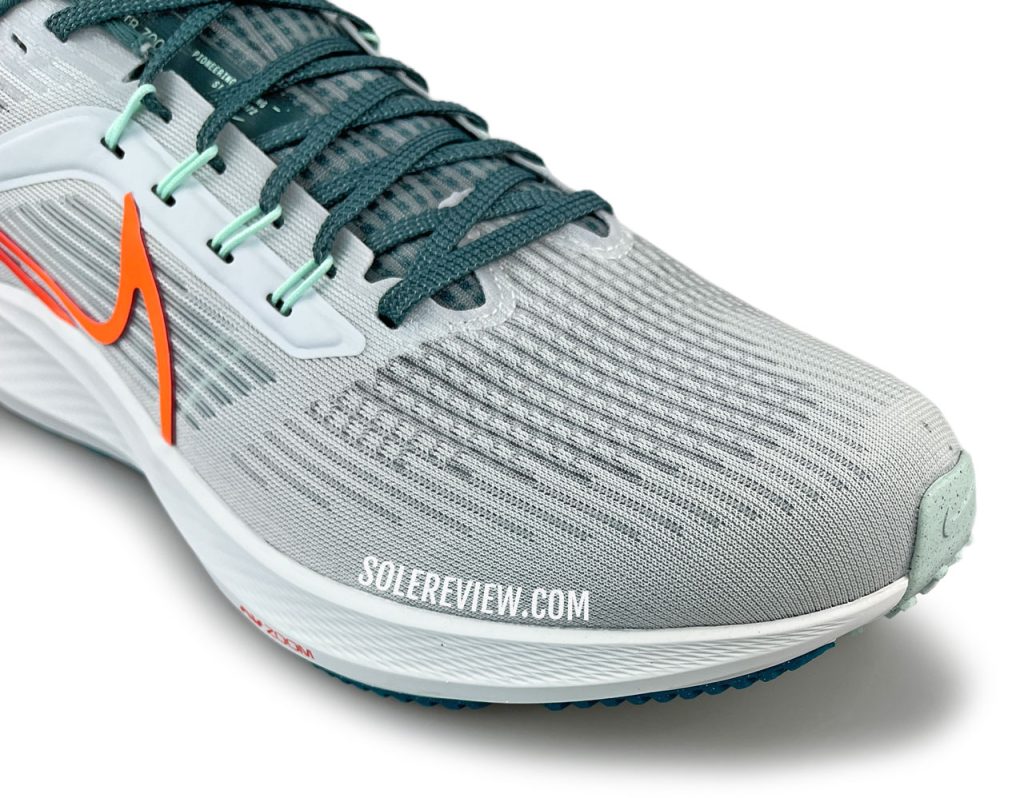
The toe box has excellent proportions, be it the toe-box height or sideways room.
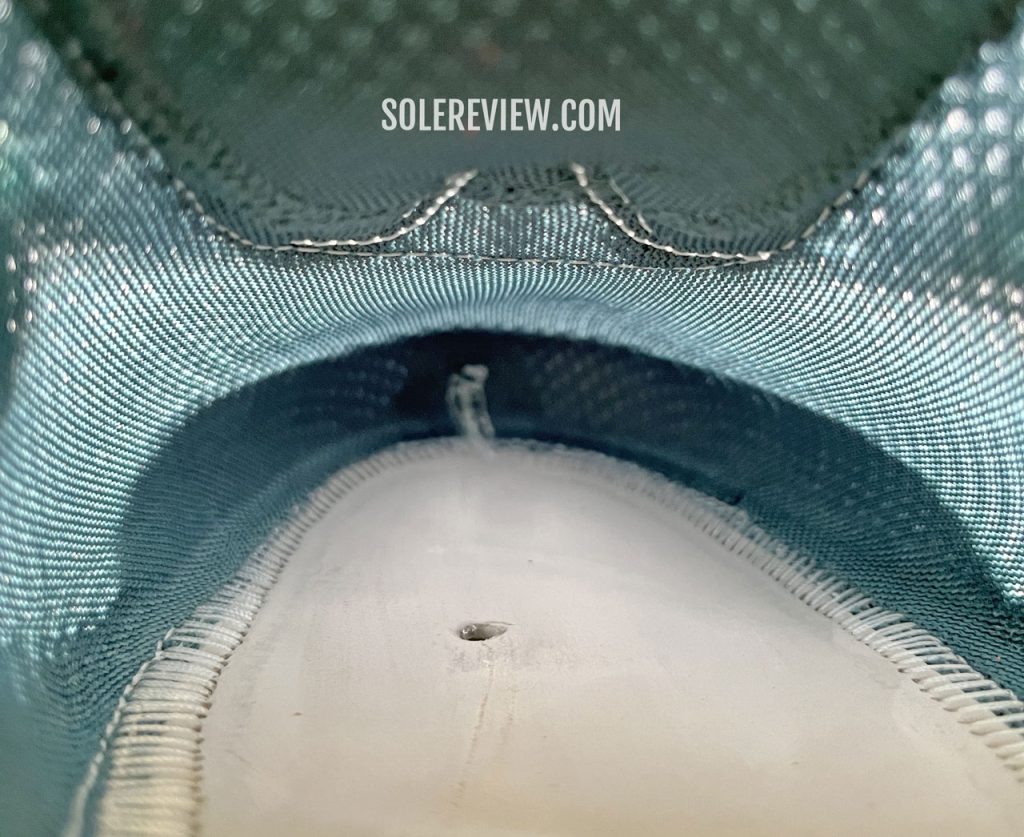
The interiors are lined with a sleeve made of padded spacer mesh for comfort. The ventilation is average.
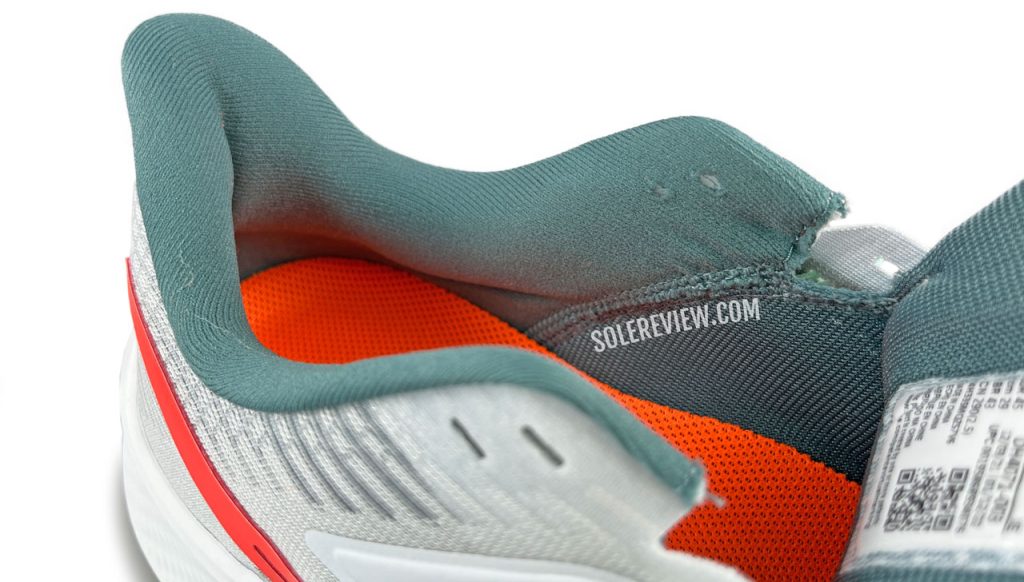
The contoured padding of the heel collar results in a comfortable grip with no slippage.
The toe-box has just the right amount of space without compromising the fit security or comfort. It helps that the inner sleeve is made of spacer mesh with a spongy feel.
The comfortable padding inside the tongue and heel also help the upper achieve a secure, no-slip fit.
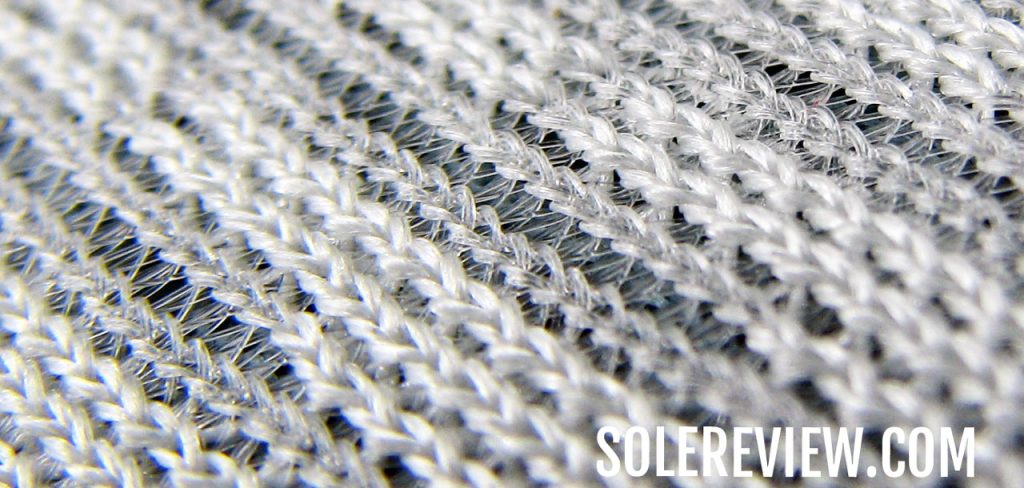
While the Pegasus 39 can run slightly warm during summers, it’s potentially a decent three-season running shoe.
Unlike ultra-breathable shoes like the Saucony Ride 15, the Pegasus has average ventilation.
While it’s not stuffy, the interiors can get warm during a hot summer day. On the bright side, the Peg 39 is a good three-season running shoe, except for rainy and snowy days.
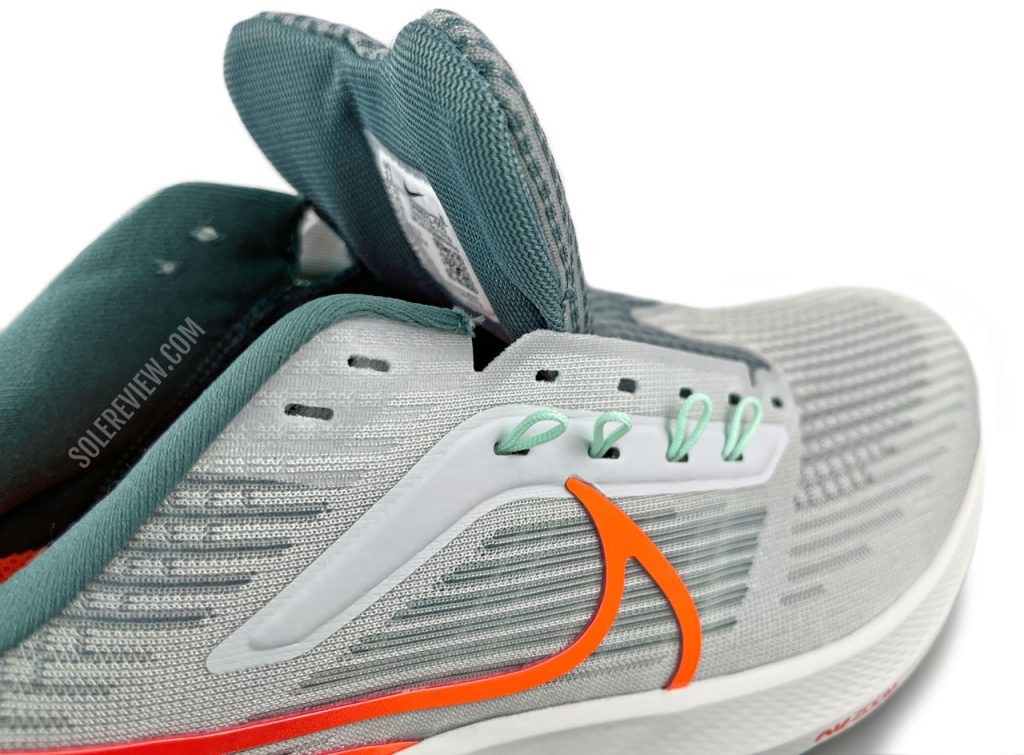
The tongue flap could do with a little more width so that it can be partially tucked under the upper.
The tongue flap is asymmetrical and scooped so that it better locks in over the instep. But it’s not wide enough – after lacing the shoe, there’s a gap between the both ends of the flap and the last lacing row.
In short, not enough of the flap is available to tuck inside the upper. Though this doesn’t cause discomfort; it’s an area for potential improvement.
The Pegasus 39 has no reflectivity at all. That has become Nike’s strategy these days; remove all visibility elements from their standard model, and cram it on the Shield version during Fall and Winter.
But that’s a less than ideal solution, because Shield models are also water-resistant, thus making them too warm for summer months. The Pegasus 39 Shield will likely follow in October, but for now, here’s our review of the Pegasus 38 Shield.
PROS AND CONS
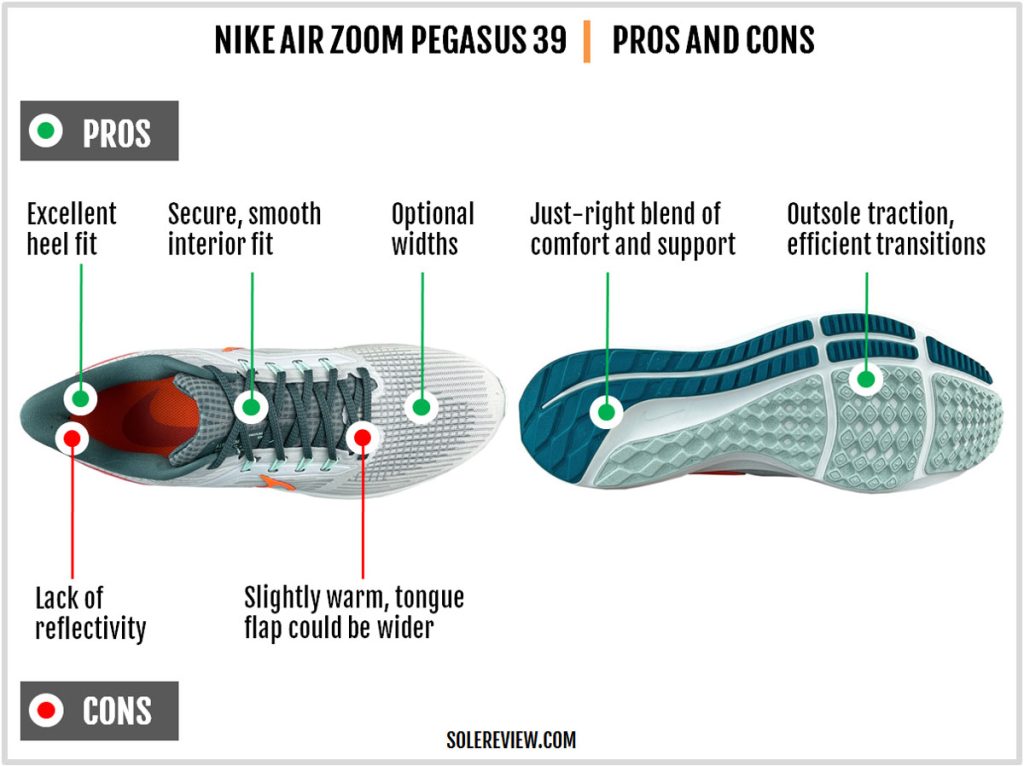
By going back to a tried-and-tested form factor, Nike gets nearly everything right on the Pegasus 39. The React midsole with its embedded Zoom Air bags produces a ride character that’s equal measures versatile and comfortable.
The Pegasus 39 is excellent for a wide range of use cases. It’s a great daily trainer, a capable tempo trainer, and comfortable enough for half marathons.
Other changes like the outsole redesign lead to improved grip and transition quality. Except for the average ventilation, reflectivity, and slightly narrow tongue flap, the upper hits the sweet spot between a secure fit and interior comfort.
COMPARISON: THE NIKE PEGASUS 39 VERSUS NIKE PEGASUS TURBO NEXT NATURE
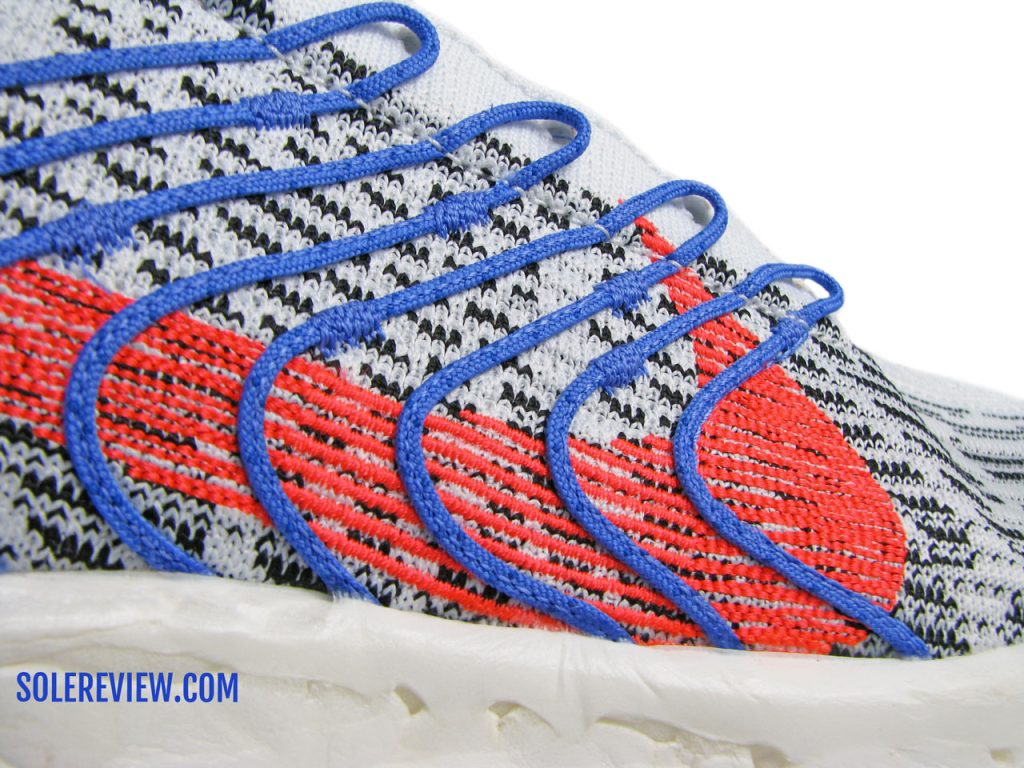
The ‘Next Nature’ upper is a clear case of form over function.
We don’t know if there’s a performance version of the Pegasus Turbo Next Nature in the pipeline, but this shoe feels like a lifestyle sneaker.
Most people will remember the Pegasus Turbo 2, and will be curious to know how the newest Next Nature version compares.
To cut a long story short – the Pegasus Turbo Next Nature doesn’t feel like a performance trainer. The sustainability story aside – 50% recycled materials and all – the Turbo’s upper fit and ride quality isn’t an improvement over the Pegasus Turbo 2.
At best, the Nike Pegasus Turbo Next Nature feels like a cushioned trainer version of the ZoomX Streakfly.
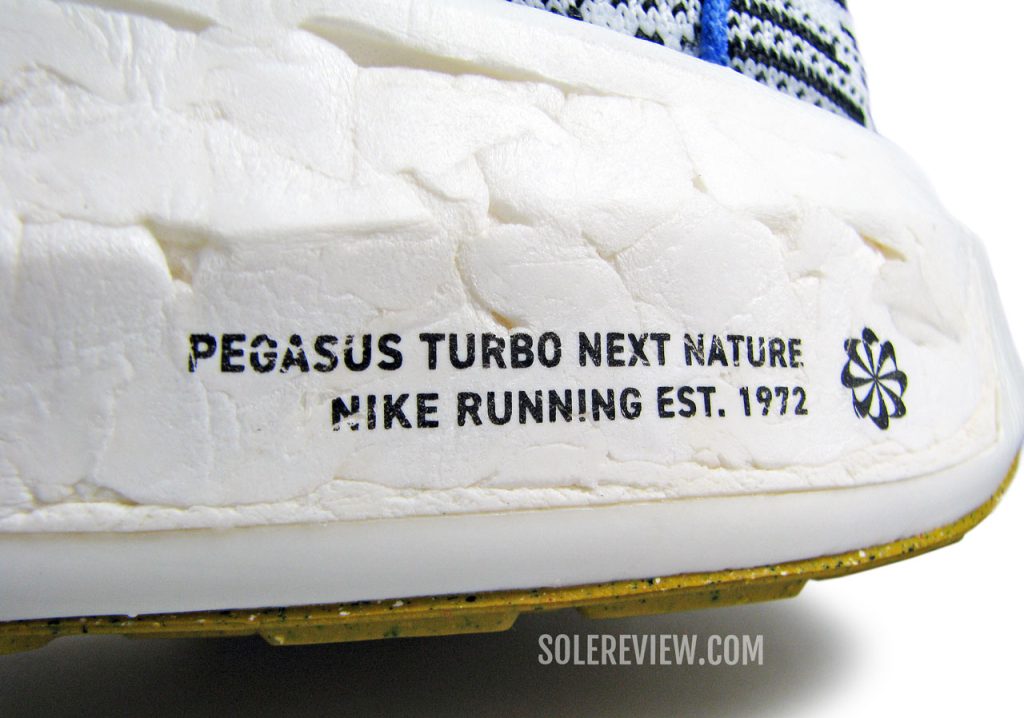
Sure, the 100% ZoomX midsole feels lively under the foot, but it misses the touch-and-go character of the older Turbo. The React layer on the previous Pegasus Turbo had a significant role in the transition quality.
While the fit is secure, the upper feels stiff over the forefoot and near the last eyelet. Its narrow entry will not suit runners with wide feet or a broad instep.
So if we had to choose between the Pegasus 39 and Turbo Next Nature, we’ll pick the 39 as an everyday trainer.
SHOES SIMILAR TO THE NIKE PEGASUS 39
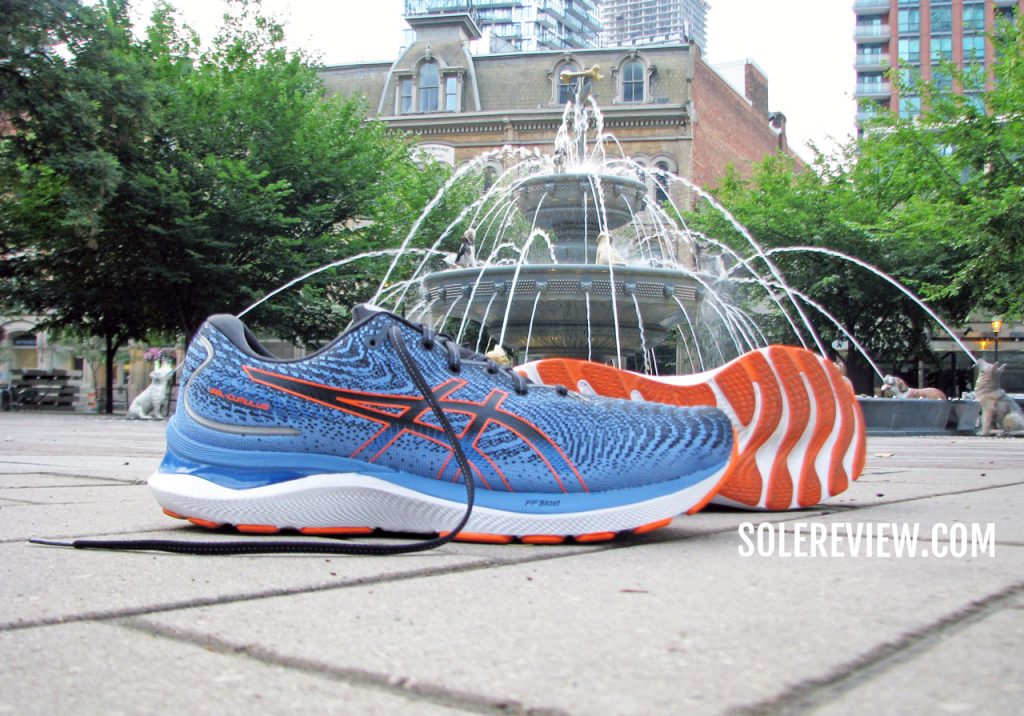
The Asics Cumulus 24 is an easygoing everyday trainer with a soft ride.
Being an everyday neutral trainer, the Nike Pegasus 39 competes with several others in this category.
For a softer ride without the snap of the Zoom Air, the Asics Cumulus 24 (our review) is an excellent alternative. The Flytefoam midsole delivers a plush yet lively ride quality and long-distance runs. It’s also priced the same.
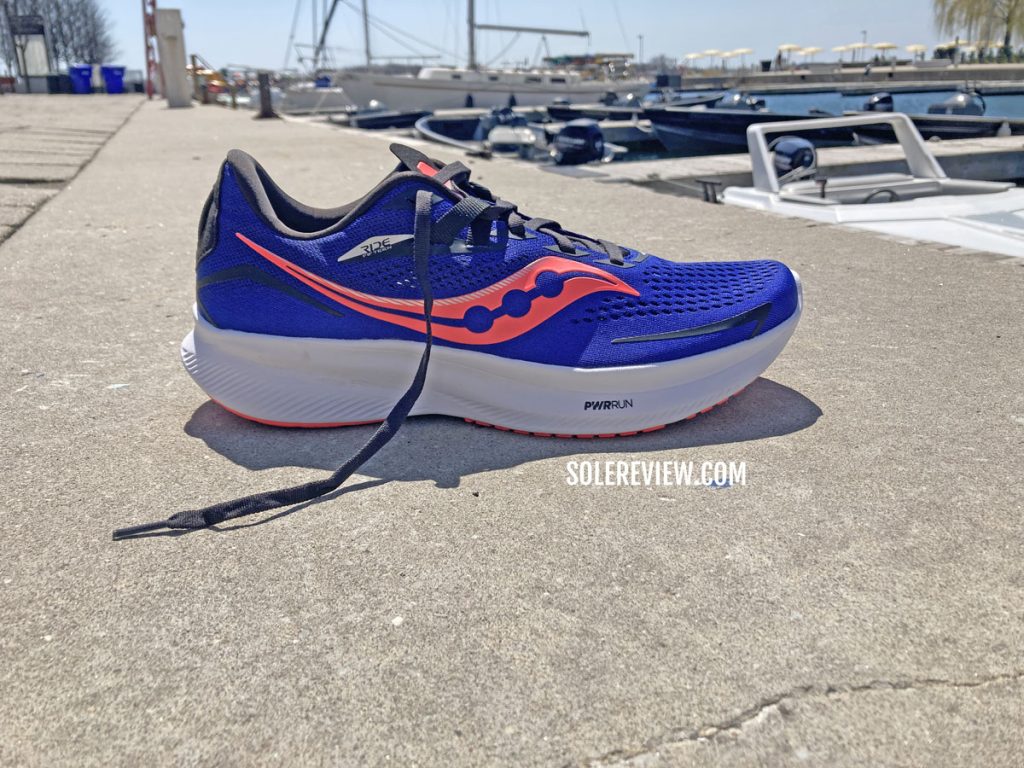
For a firmer ride and breathable upper, consider the Saucony Ride 15.
The Saucony Ride 15 is a cushioned, yet supportive everyday trainer. It’s got a firmer ride, and wider forefoot base than the Pegasus – along with a very breathable upper. Our review has everything that you need to know about the Ride 15.
The Brooks Ghost 14 and New Balance 880V12 are traditional neutral trainers that deliver a cushioned ride and comfortable upper fit. They’re not overly soft nor firm – or even lively. These running shoes offer a cushioned ride experience without any high notes. They’re perfectly capable everyday trainers for runners of all experience levels.
Do you own this shoe? Improve this review by sharing your insights – submit a review here.
